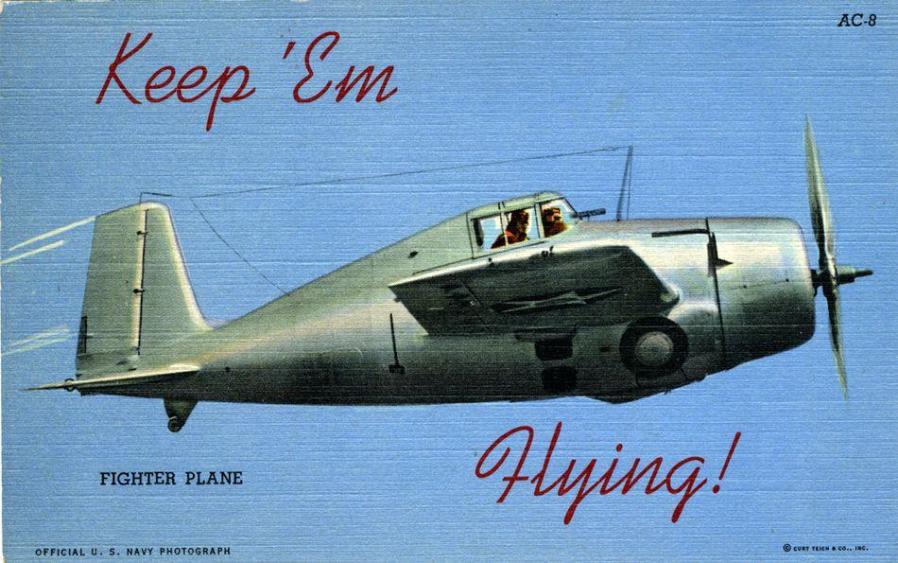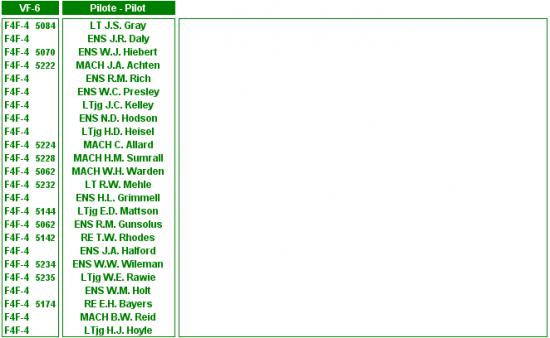Grumman F4F Wildcat
Wake
(voir position sur carte plus haut sous "THEATRES D'OPERATION" - see position above on map below "OPERATIONAL HISTORY)
4 jours avant Pearl Harbor, l'Enterprise avait livré 12 Wildcat F4F-3 du VMF 211 à Wake (commandés par le Major Putnam de l'USMC). Par mesure de sécurité, 4 Wildcat assuraient en permanence un vol de surveillance au dessus de l'île. Le 8 décembre 1941, 36 Betty échappèrent à la surveillance des 4 avions en vol et bombardèrent l'aérodrome.
4 days before Pearl Harbor, the Enterprise delivered 12 Wildcat F4F-3 of the VMF 211 at Wake (leaded by Major Putnam of the USMC). For safety reasons, 4 Wildcat permanently ensured a protection flight over the island. On December 8th, 1941, 36 Bettys avoided the 4 aircrafts in flight and bombed the airfield.
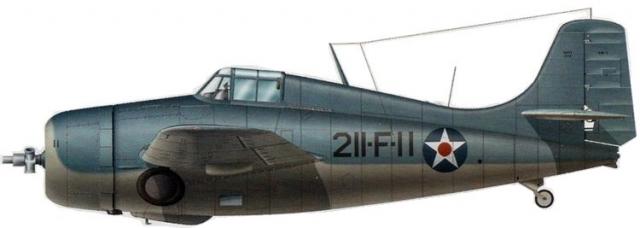
F4F-3 - VMF 211, Wake
Décembre 1941 - December 1941
© Jean-Marie Guillou
Les Wildcat au sol tentèrent de décoller (un par un car la piste était étroite) mais 7 des 8 avions furent détruits. Au retour des 4 Wildcat, l'un d'entre eux fut endommagé à l'atterissage. Les mécaniciens travaillèrent efficacement et dès le lendemain, 5 Wildcat étaient prêt à combattre. Ce jour là, 9 décembre, des Betty attaquèrent Wake de nouveau mais 16 (sur 36) furent abattus par la DCA et les F4F-3.
The Wildcats on the ground tried to take off (one by one because of the narrowness of the track) but 7 out of the 8 remaining aircrafts were destroyed. When coming back, one of the 4 Wildcats was damaged when landing. The mechanics worked hard and the following day, 5 Wildcat were ready to fight. This day, December 9th, some Bettys attacked Wake again and 16 (out of 36) were shot down by the Flak or the F4F-3.
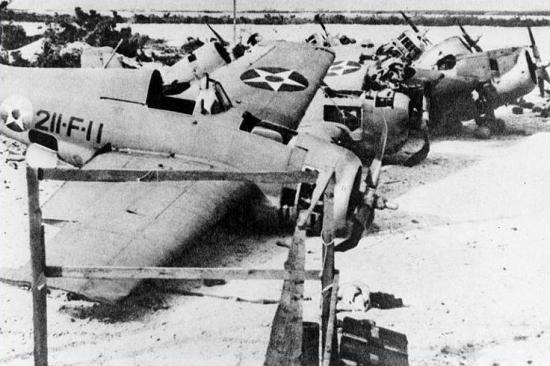
F4F-3 - VMF 211, Wake 1941
Les épaves des Wildcat après la capture de Wake par les Japonais.
Wrecked Wildcats after Wake's capture by the Japanese.
© Naval Historical Center - (US Navy) - www.history.navy.mil
Le 10 décembre, les Betty attaquèrent encore et 2 furent abattus par le Captain Elrod. Le 11 décembre, les Japonais tentèrent de débarquer à Wake. La flotte d'invasion fut attaquée dix fois de suite (notamment à la bombe) par 4 Wildcat (Major Putnam, Captains Elrod, Freuler et Tharin). Elrod coula le destroyer Kisaragi. Un autre destroyer fut coulé et les Japonais se retirèrent mais 2 Wildcat furent perdus. Plus tard ce même jour, les Betty attaquèrent et trois furent abattus par Davidson et Kinney. Un sous marin fut également détruit par le Lieutenant Kliewer.
On December 10th, the Bettys still attacked and 2 were shot down by Captain Elrod. On December 11th, the Japanese tried to invade Wake. The invasion fleet was tattacked and bombed ten times by 4 Wildcat (Major Putnam, Captains Elrod, Freuler and Tharin). Elrod sunk the destroyer Kisaragi. Another destroyer was sunk and the Japanese gave up but 2 Wildcat were lost. Later this same day, some Bettys attacked and three were shot down by Davidson and Kinney. A submarine was also destroyed by Lieutenant Kliewer.

F4F-4 - Couleurs du début de la guerre. Colours of the beginning of the war.
© Gaëtan Marie - source : Gaëtan Marie's Aviation Profiles http://www.gaetanmarie.com
Le 12 décembre, un hydravion fut abattu par Tharin. Le 14 décembre, 30 Betty revinrent et détruisirent un des deux derniers Wildcat. Le 21 décembre, les Japonais attaquèrent Wake avec 146 avions : Putnam décolla seul et dut revenir, son appareil étant très endommagé. Les mécaniciens se surpassèrent et ressuscitèrent deux Wildcat. Le 22 décembre, ils affrontèrent une nouvelle vague d'assault mais succombèrent face aux Zéros. Le 23 décembre, un millier de Japonais débarquèrent et le 24, Wake capitulait.
On December 12th, a seaplane was shot down by Tharin.On December 14th, 30 Bettys came back and destroyed one of the last two Wildcat. On December 21st, the Japanese attacked Wake with 146 aircrafts : Putnam took off alone but had to return, his aircraft being very damaged. The mechanics worked hard again and resurrected two Wildcats. On December 22nd, they faced a new assault wave but succumbed when fighting the Zeros. On December 23rd, a thousand of Japanese invaded the island and on the 24, Wake capitulated.
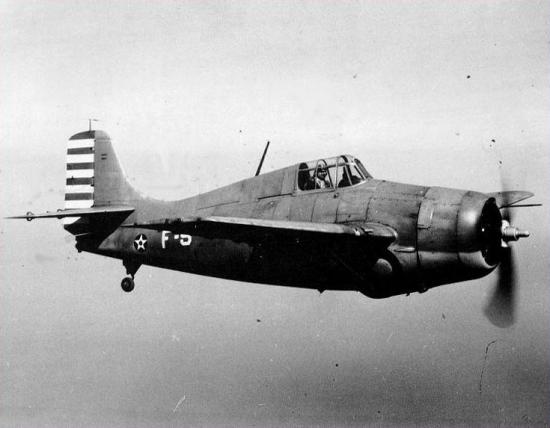
F4F-3 - Février 1942 - February 1942. © Naval Historical Center - (US Navy) - www.history.navy.mil
 De Pearl Harbor à la bataille de la Mer de Corail
De Pearl Harbor à la bataille de la Mer de Corail
From Pearl Harbor to the battle of the Coral Sea
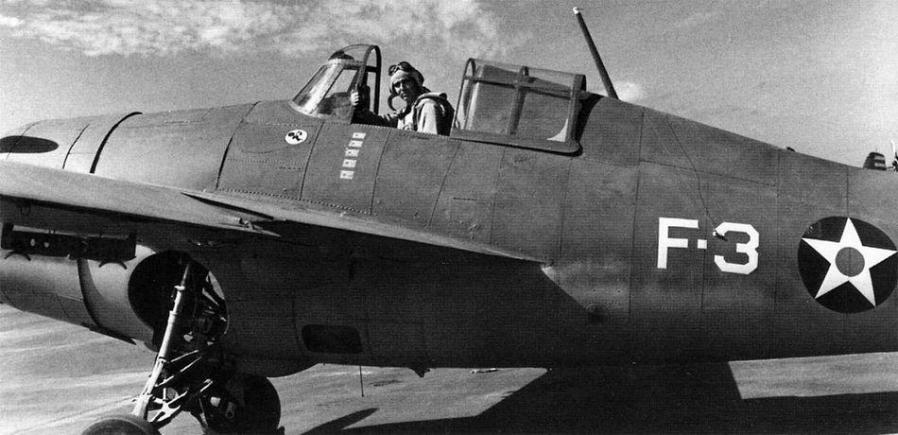
"Butch" O'Hare, Grumman Wildcat F4F-3, VF-3 - Naval Air Station Kaneohe (Oahu, Hawaii) - 10 avril 1942 - 10 April 1942
© US Navy National Archives (domaine public - public domain)
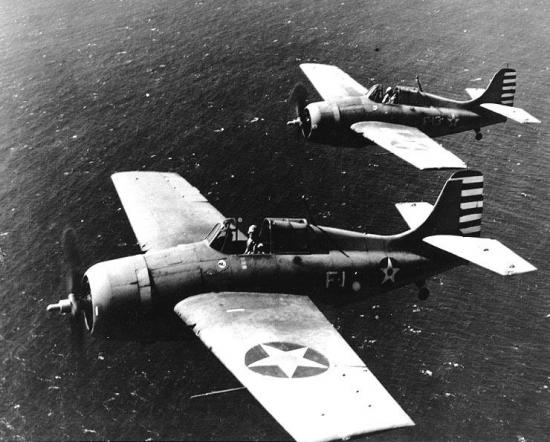
Lt Cdr John S. Thach ("F-1" BuAer # 3976) & Lt Edward H."Butch" O'Hare ("F-13 BuAer #3986)
VF-3, Naval Air Station Kaneohe (Oahu, Hawaii) - 10 avril 1942 - 10th April 1942
© Naval Historical Center - (US Navy) - www.history.navy.mil
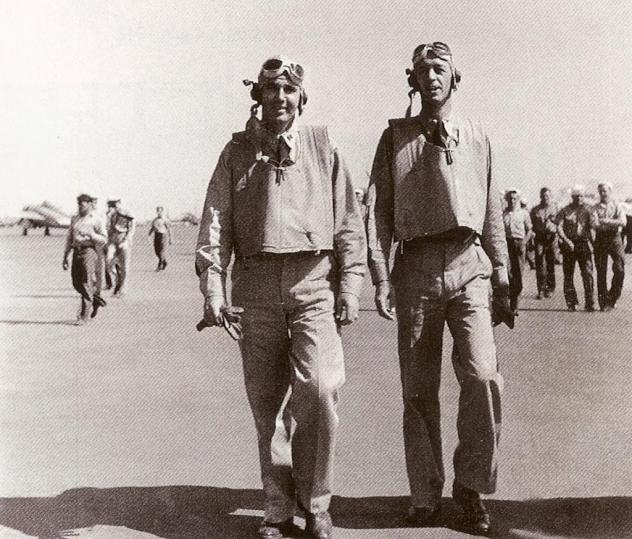 Lt Edward H."Butch" O'Hare & Cdr John S. Thach
Lt Edward H."Butch" O'Hare & Cdr John S. Thach
© US NARA - www.archives.gov
 Le 20 février 1942, au large de Rabaul, le USS Lexington (CV-2) détecta des avions Japonais et envoya des F4F-3, dont un piloté par le Lieutenant O'Hare qui abattit cinq Betty en quelques minutes ; il devint ainsi le premier as sur Wildcat et obtint le surnom de "Butch" (le boucher).
Le 20 février 1942, au large de Rabaul, le USS Lexington (CV-2) détecta des avions Japonais et envoya des F4F-3, dont un piloté par le Lieutenant O'Hare qui abattit cinq Betty en quelques minutes ; il devint ainsi le premier as sur Wildcat et obtint le surnom de "Butch" (le boucher).
On February 20th, 1942, around Rabaul, the USS Lexington (CV-2) detected Japanese aircrafts and sent F4F-3s, and among them one flown by Lieutenant O' Hare who shot down five Bettys in a few minutes ; he thus became the first ace on Wildcat and obtained the nickname of "Butch" (the butcher).
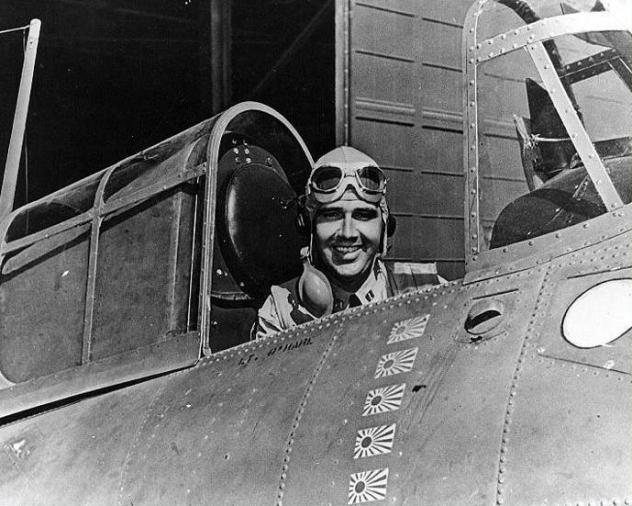
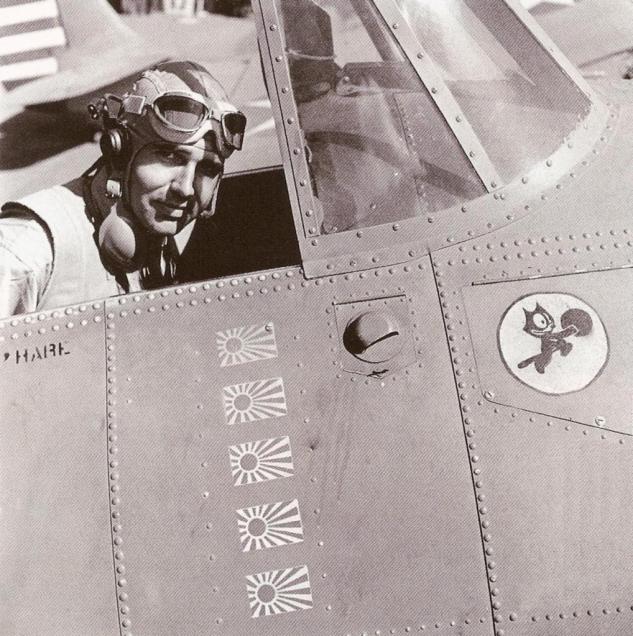 "Butch" O'Hare
"Butch" O'Hare
A bord de son Wildcat avec ses 5 drapeaux de victoires.On board his Wildcat with 5 victory flags
© US Navy (domaine public - public domain)
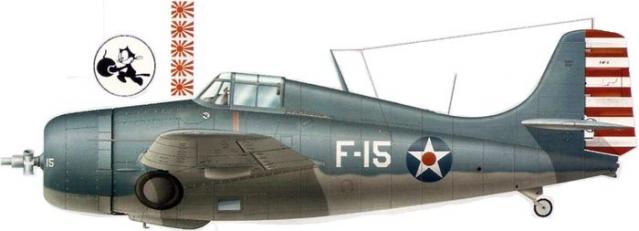
F4F-3 (BuAer 4031) - VF-3 - USS Lexington (CV-2), 1942 - Le "15 blanc" de O'Hare. O'Hare's "white 15".
© Jean-Marie Guillou
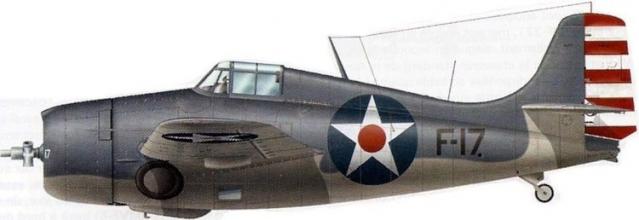
F4F-3 - VF-6 - USS Enterprise (CV-6) - Mars 1942. March 1942.
© Jean-Marie Guillou
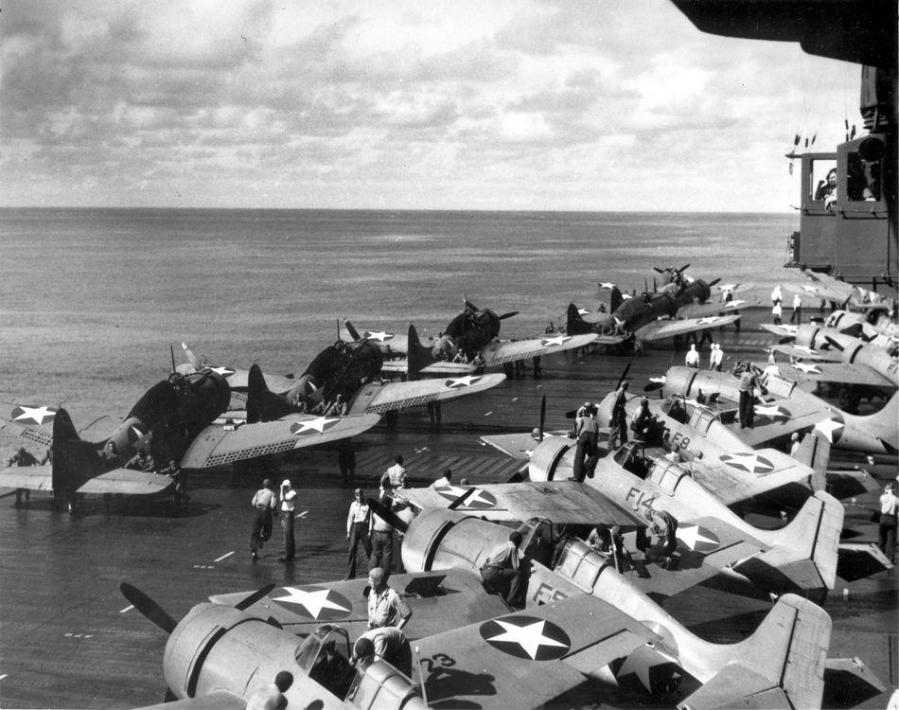
Douglass Dauntless (VS-5) & Grumman F4F (VF-6), USS Enterprise, Mai/May 1942
© US Navy - Domaine public - Public domain
Le 18 avril 1942, 24 appareils F4F-3 et F4F-4 du VF-6 (USS Enterprise) escortèrent les B-25 du Lieutenant- Colonel James "Jimmy" H. Doolittle pour son raid sur Tokyo.
Début mai, les 20 F4F-3 du VF-42 (USS Lexington) et les 22 F4F-3 du VF-2 (USS Yorktown) étaient prêts à défendre Port-Moresby au sud de la Nouvelle-Guinée.
On April 18th, 1942, 24 models F4F-3 and F4F-4 of the VF-6 (USS Enterprise) escorted the B-25s of the Lieutenant-Colonel James "Jimmy" H. Doolittle for his raid on Tokyo.
Early May, 20 F4F-3 of the VF-42 (USS Lexington) and 22 F4F-3 of the VF-2 (USS Yorktown) were ready to defend Port-Moresby in the south of New Guinea.
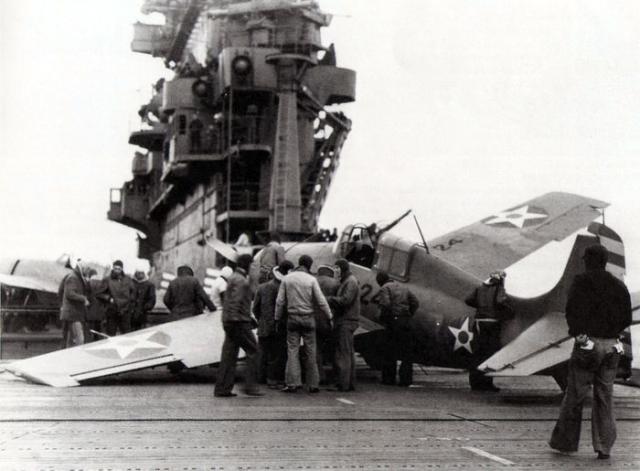
F4F "F-24"- USS Enterprise - Accident léger, 20 avril 1942 - Light accident, April 20th, 1942
© US Navy (domaine public - public domain)
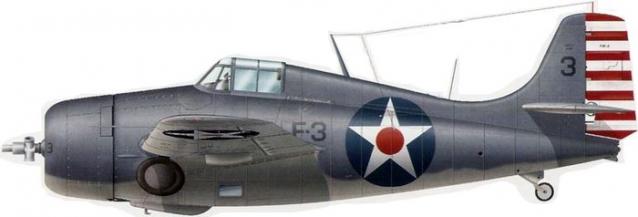
Grumman F4F-3 Wildcat (BuAer 2522 ?)- Lieutenant William N. Leonard, Fighting Forty-two
USS Yorktown (CV-5), Tulagi, 4 mai 1942 - May 4th, 1942.
© Jean-Marie Guillou
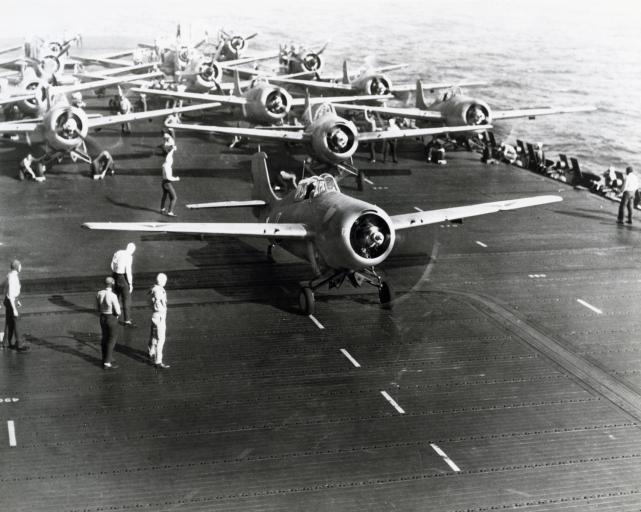
F4F-3 - VF-6, USS Enterprise - 10 mai 1942 - May 10th, 1942 © US Navy (domaine public - public domain)
 Le 7 mai, un premier combat eut lieu et 9 appareils japonais furent perdus contre 2 Wildcat. Le 8, des Wildcat escortant des TBD Devastator à l'attaque du porte-avions Shokaku abattirent une douzaine de Zero. Les Japonais renoncèrent à attaquer Port-Moresby mais le Lexington fut coulé.
Le 7 mai, un premier combat eut lieu et 9 appareils japonais furent perdus contre 2 Wildcat. Le 8, des Wildcat escortant des TBD Devastator à l'attaque du porte-avions Shokaku abattirent une douzaine de Zero. Les Japonais renoncèrent à attaquer Port-Moresby mais le Lexington fut coulé.
On May 7th, a first dogfight led to 9 Japanese aircrafts lost versus 2 Wildcat. On the 8th, some Wildcats, escorting TBD Devastators for the attack of the Shokaku aircraft-carrier, shot down a dozen of Zeros. The Japanese gave up in attacking Port-Moresby but the Lexington was sunk.
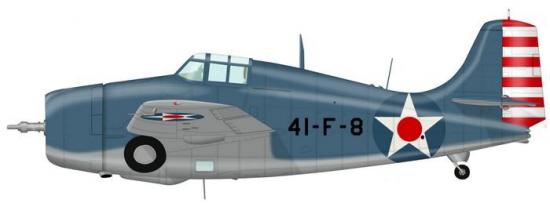
F4F-4 - VF-41- USS Ranger, 1942.
© Gaëtan Marie - source : Gaëtan Marie's Aviation Profiles http://www.gaetanmarie.com
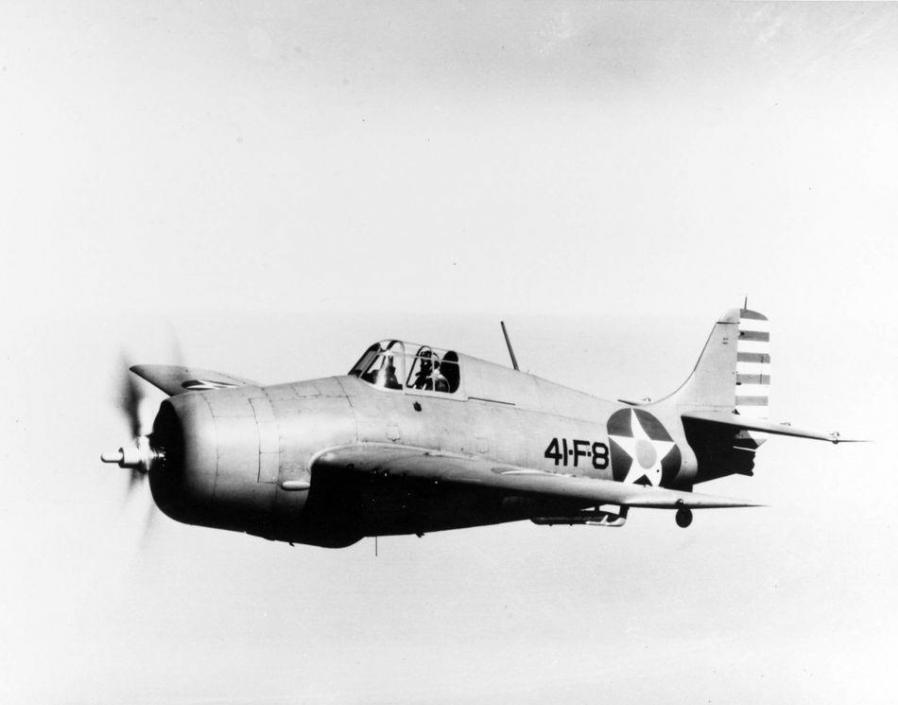
F4F-4 (BuNo 4084)- VF-41- USS Ranger, 1942
© U.S. Navy - National Archives Photo 80-G-7026 (domaine public - public domain)
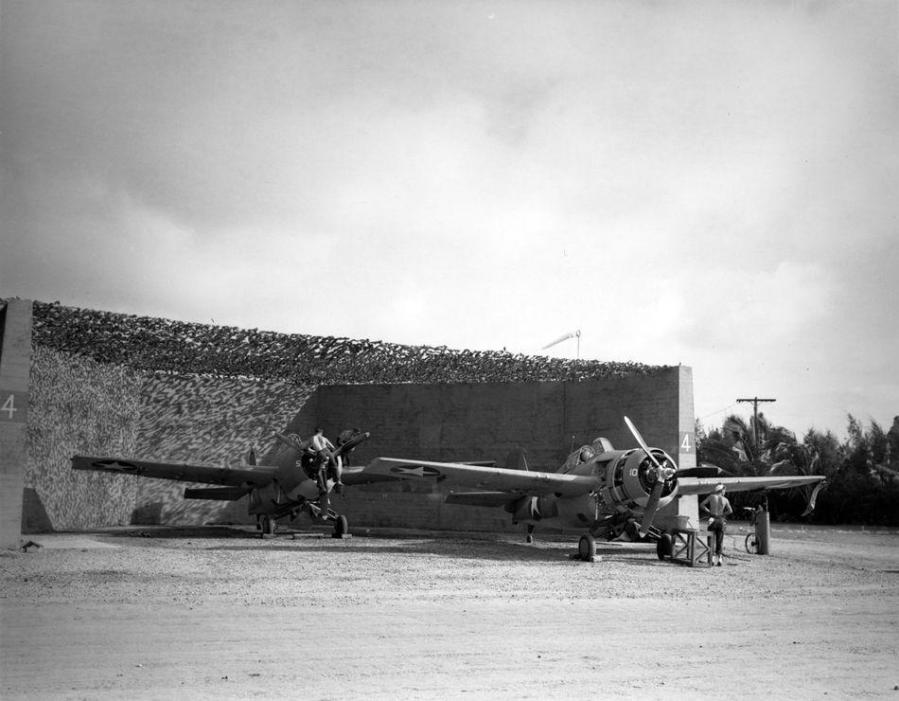
Grumman F4F-4 - Marine Corps Air Station Ewa
© US Navy National Archives Photo 80-G-61533 (domaine public - public domain)
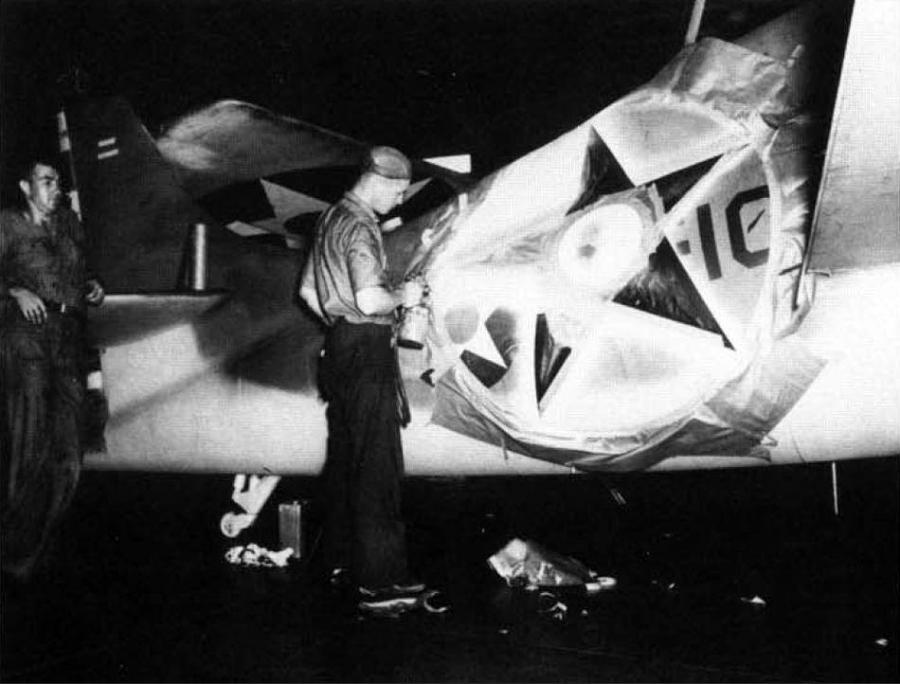
Grumman Wildcat VF-3
Le Wildcat est peint avec la cocarde élargie imposée par la Navy le 5 janvier 1942
The Wildcat is being painted with the enlarged insignia ordered by the Navy on 5 January 1942
© National Archives (domaine public - public domain)
Midway
(voir position sur carte plus haut sous "THEATRES D'OPERATION" - see position above on map below "OPERATIONAL HISTORY
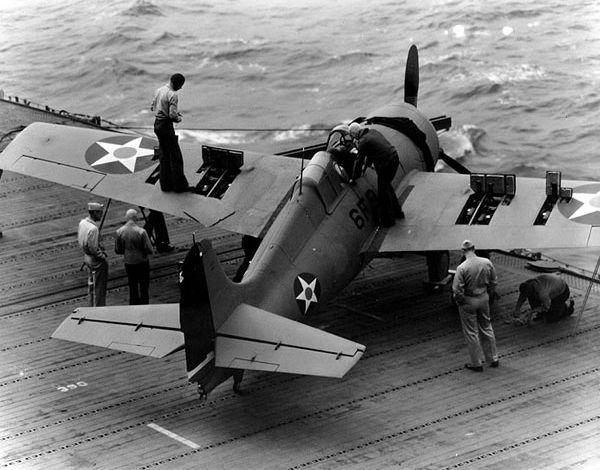
Réglage des armes du F4F-3 "6F9", VF-6, USS Enterprise.
Weapons adjustement of a F4F-3 "6F9", VF-6, USS Enterprise.
© US National Archives (website)
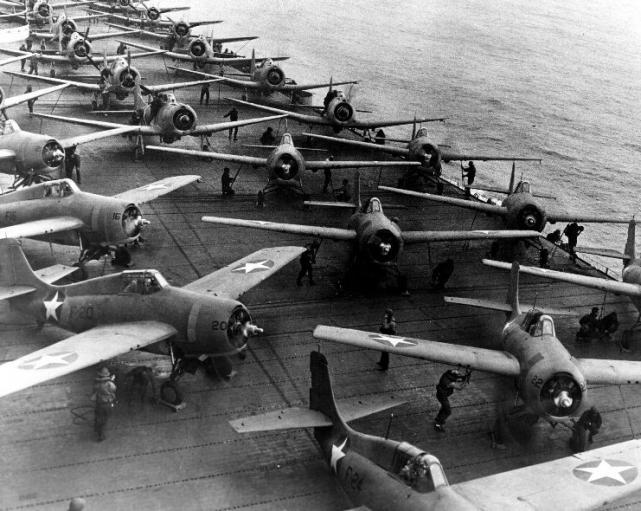
F4F-4 - USS Hornet - 4 juin 1942 - June 4th, 1942 - © US Navy (domaine public - public domain)
En juin 1942, les Japonais envoyèrent une forte armada vers Midway (incluant 8 porte-avions). Informés, les américains (amiral Nimitz) envoyèrent les Yorktown (CV-3 de la Task Force 17), l'Enterprise et le Hornet (CV-6 et CV-8 de la Task Force 16) dans la région.
In June 1942, the Japanese sent an important armada to Midway (including 8 aircraft-carriers). Informed, the Americans (admiral Nimitz) sent the Yorktown (CV-3 of the Task Force 17), the Enterprise and the Hornet (CV-6 and CV-8 of the Task Force 16) in the region.
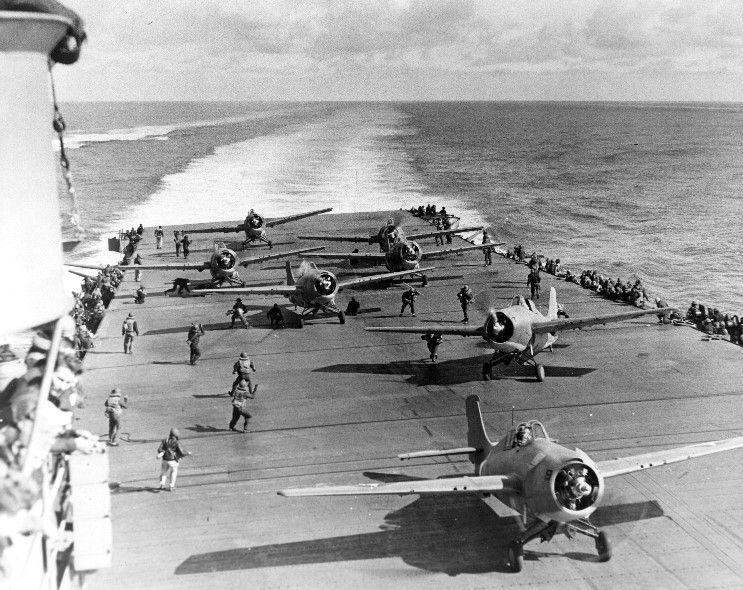
Wildcat F4F-4 (VF-8) - USS Hornet (CV-8)
Avion au premier plan (F-9) piloté par l'Ens. Charles M. Kelly Jr, 4 juin 1942 -
The forward aircraft (F-9) flown by Ens. Charles M. Kelly Jr 4th, 1942
© US Navy (domaine public - public domain)
234 avions dont 81 Wildcat (27 F4F-4 (dont 2 à l'état d'épaves) du VF-3 commandés par le Lt-Commander John S. Thach sur le Yorktown, 27 Wildcat du VF-6 commandés par le Lt-Commander J.S. Gray sur l'Enterprise et 27 Wildcat du VF-8 commandés par le Lt-Commander S.G. Mitchell sur le Hornet).
234 aircrafts including 81 Wildcat (27 F4F-4 (including 2 wrecks) of the VF-3 leaded by Lt-Commander John S.Thach on the Yorktown, 27 Wildcat of the VF-6 leaded by Lt-Commander J.S. Gray on the Enterprise and 27 Wildcat leaded by Lt-Commander S.G. Mitchell of the VF-8 on the Hornet).
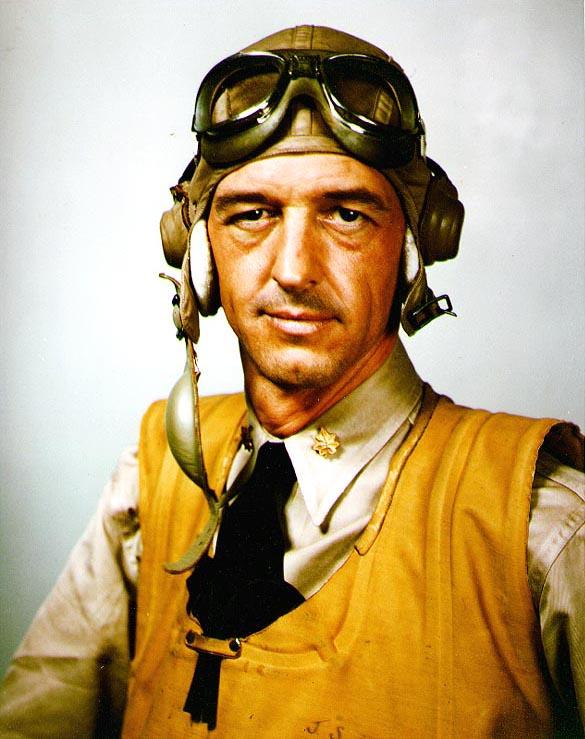
Lt Commander John S. Thach - © US Navy (domaine public - public domain)

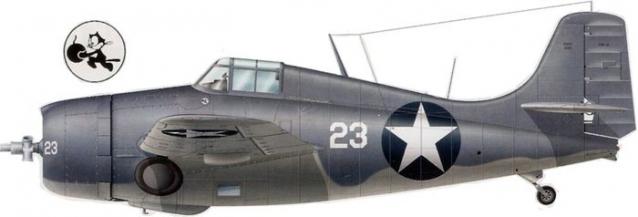
Grumman F4F-4 Wildcat (BuAer 5093) - Lt Commander John S. Thach
VF-3 - USS Yorktown (CV-10) - 4 juin 1942 - 4th June, 1942.
© Jean-Marie Guillou
Sur Midway se trouvaient 7 Wildcat F4F-3 (dont 1 indisponible) du VMF-221 (USMC) commandés par le Capitaine K. Armistead parmi les 126 avions de l'île.
On Midway were based 7 Wildcat F4F-3 (including 1 unavailable) of the VMF-221 (USMC) leaded by Captain K. Armistead among the 126 aircrafts of the island.

Jimmy Thach, à bord de son F4F-3 en février 1942 - Jimmy Thach on board his F4F-3 in February 1942.
© US National Archives (website)
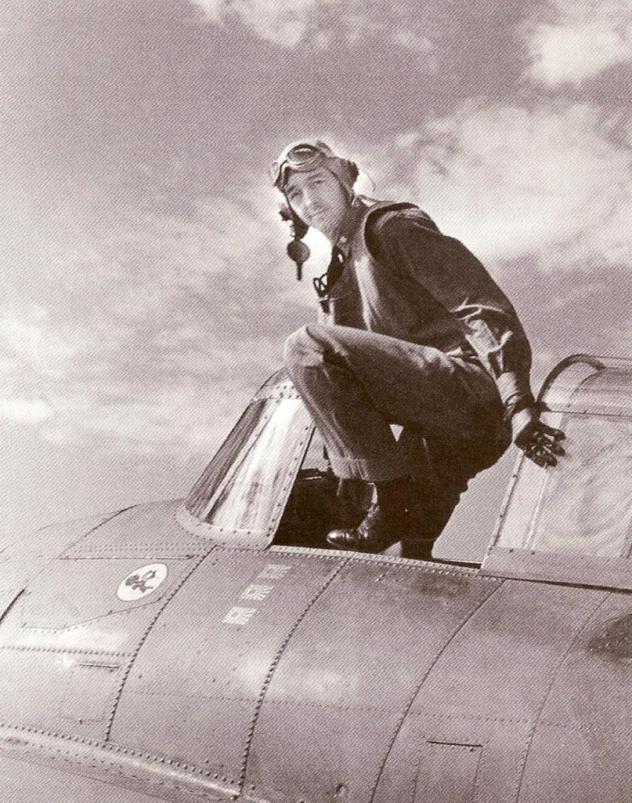 John S. Thach - © US National Archives (website)
John S. Thach - © US National Archives (website)
Le 4 juin, une première vague japonaise abattit 13 Buffalo F2A-3 et 2 Wildcat F4F-4. Les américains envoyèrent de nouvelles patrouilles dont une avec John Thach qui descendit 3 Zero en exécutant la fameuse "Thach Weave" (2 Wildcat qui volent sur des trajectoires croisées pour se couvrir mutuellement les arrières).
On June 4th, a first Japanese group shot down 13 Buffalo F2A-3 and 2 Wildcat F4F-4. The Americans sent new patrols including one with John Thach who shot down 3 Zeros thanks to his famous "Thach Weave" (2 Wildcat on crossed trajectories to mutually cover their backs).
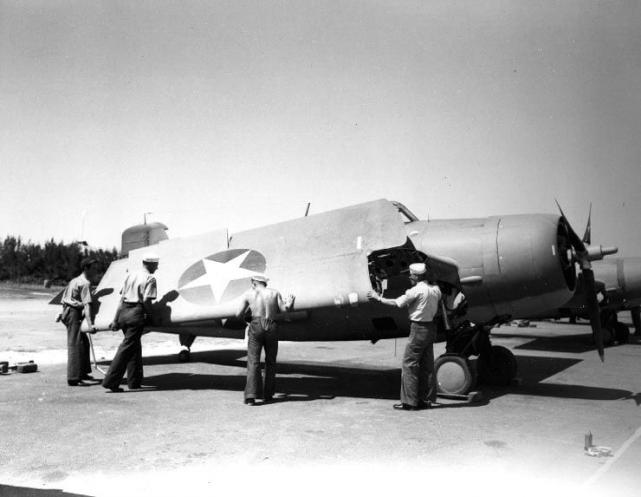
F4F-4, Lt Commander John F. S. Thach © US Navy (domaine public - public domain)
 LE TERRIBLE ACCIDENT DE DANIEL C. SHEEDY.
LE TERRIBLE ACCIDENT DE DANIEL C. SHEEDY.
THE TERRIBLE ACCIDENT OF DANIEL C. SHEEDY.
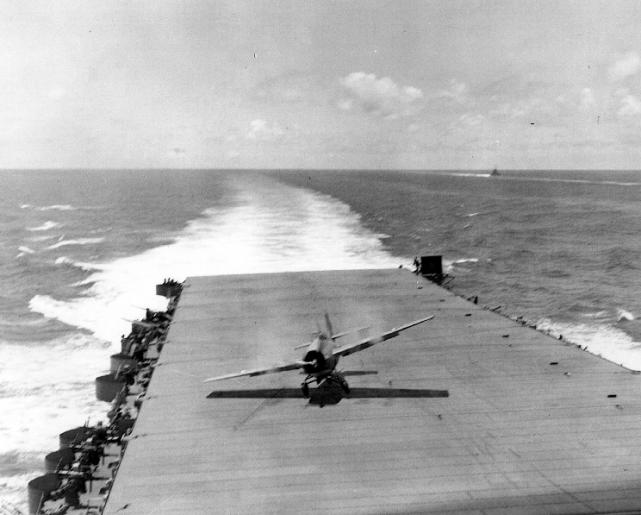 L'accident fatal de l'Ens. Daniel C. Sheedy, le 4 juin 1942 sur l'USS Hornet. Notez la fumée qui sort des mitrailleuses.
L'accident fatal de l'Ens. Daniel C. Sheedy, le 4 juin 1942 sur l'USS Hornet. Notez la fumée qui sort des mitrailleuses.
The fatal accident of Ens. Daniel C. Sheedy, June 4th, 1942, on USS Hornet. Note puffs of smoke coming from the aircraft's guns
Photo : auteur inconnu - Picture : author unknown
A 14h30 ce 4 juin 1942, le F4F-4 (3-F-24) de la VF-3 (USS Yorktown CV-5) atterrit sur le USS Hornet CV-8. Son avion endommagé, blessé à la jambe, le pilote (Ens. Daniel C. Sheedy) se pose durement et lors de l'impact, ses 6 mitrailleuses de 50 ouvrent le feu et tuent 5 membres d'équipage et en blessent une vingtaine d'autres. Le pilote n'aurait pas verrouiller ses mitrailleuses avant de se poser mais le système de verrouillage était de toute façon endommagé pendant le combat.
On June 4, 1942, at 2.30 pm, the F4F-4 (3-F-24) from VF-3 (USS Yorktown CV-5) landed on the USS Hornet CV-8. With his aircraft damaged and wounded in the leg, the pilot (Ens. Daniel C. Sheedy) landed hard and at the moment of impact the six .50 cal. machine guns opened fire killing five of Hornet's crew and wounding twenty others.The pilot probably failed to cut off the gun switch before landing but however, the circuits for the switch had been damaged in combat.
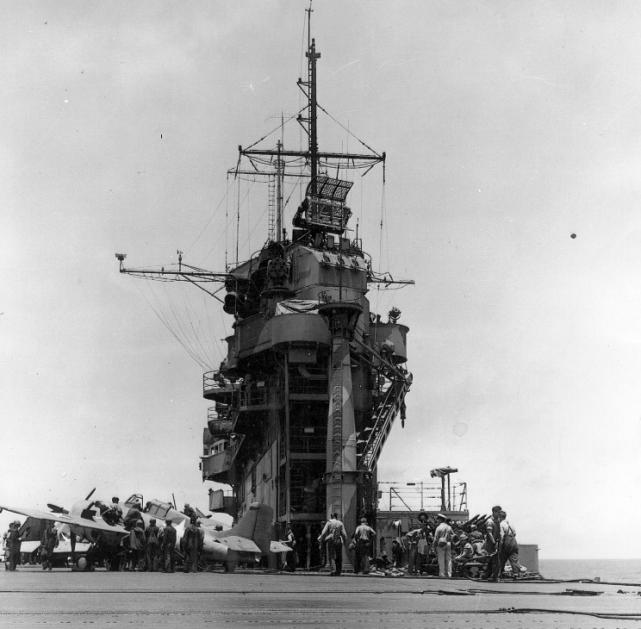
Les marins de l'USS Hornet retirent le pilote de l'avion.
The USS Hornet's crew remove the pilot from the plane.
Photo : auteur inconnu - Picture : author unknown
Le pilote fut sorti de l'avion et l'avion basculé par dessus bord. Aucune culpabilité par négligence ne fut retenue (rapport administratif du 14 juin 1942). Un second F4F-4 (3-F-5) de la VF-3 du Yorktown se pose à 15h30 sur le Hornet et là aussi, les mitrailleuses se déclenchent. Cette fois c'est le pilote, l'Ens. H. A. Bass, qui avait appuyer sur le bouton de mise à feu mais heureusement sans faire de victimes (avion dans l'axe).
The pilot was removed from the plane and the aircraft then pushed over the side. No culpable neglect or culpable inefficiency were stated (administrative report filed June 14, 1942). A second F4F-4 (3-F-5) from VF-3 (USS Yorktown) landed on USS Hornet at 3.30 pm and again machine guns open fire. This time the pilot, Ens. H. A. Bass, inadvertently pressed the firing key but by chance noone was hit (aircraft landed on the centerline).
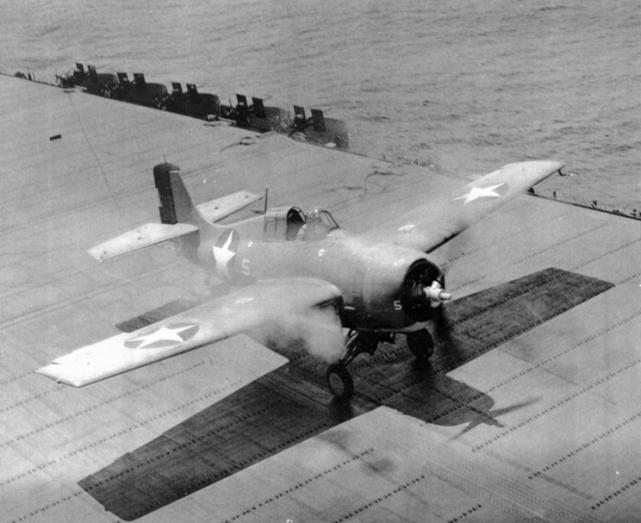
L'Ens. Bass déclenchent accidentellement ses mitrailleuses à l'atterissage sur l'USS Hornet.
Ens Bass open fire inadvertently when landing on the USS Hornet.
Photo : auteur inconnu - Picture : author unknown
 Pendant que les Japonais attaquaient Midway, un groupe américain composé de Dauntless, de Devastator et d'une vingtaine de Wildcat fut lancée à la poursuite de l'escadre de l'amiral Nagumo.
Pendant que les Japonais attaquaient Midway, un groupe américain composé de Dauntless, de Devastator et d'une vingtaine de Wildcat fut lancée à la poursuite de l'escadre de l'amiral Nagumo.
While the Japanese attacked Midway, an American group composed of Dauntless, Devastator and about twenty Wildcat was launched to the attack the admiral Nagumo's fleet.
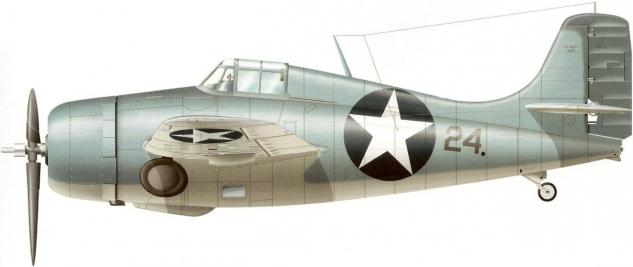 Grumman F4F-3 Wildcat (BuAer 4000) - Captain Marion E. Carl, VMF-221
Grumman F4F-3 Wildcat (BuAer 4000) - Captain Marion E. Carl, VMF-221
Midway, 4 juin 1942 - Midway, 4th June, 1942
© Jean-Marie Guillou
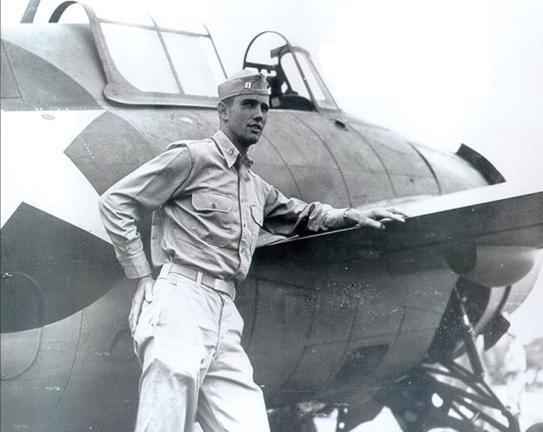
Captain Marion E. Carl, VMF-221 © USMC
© Naval Historical Center - (US Navy) - www.history.navy.mil
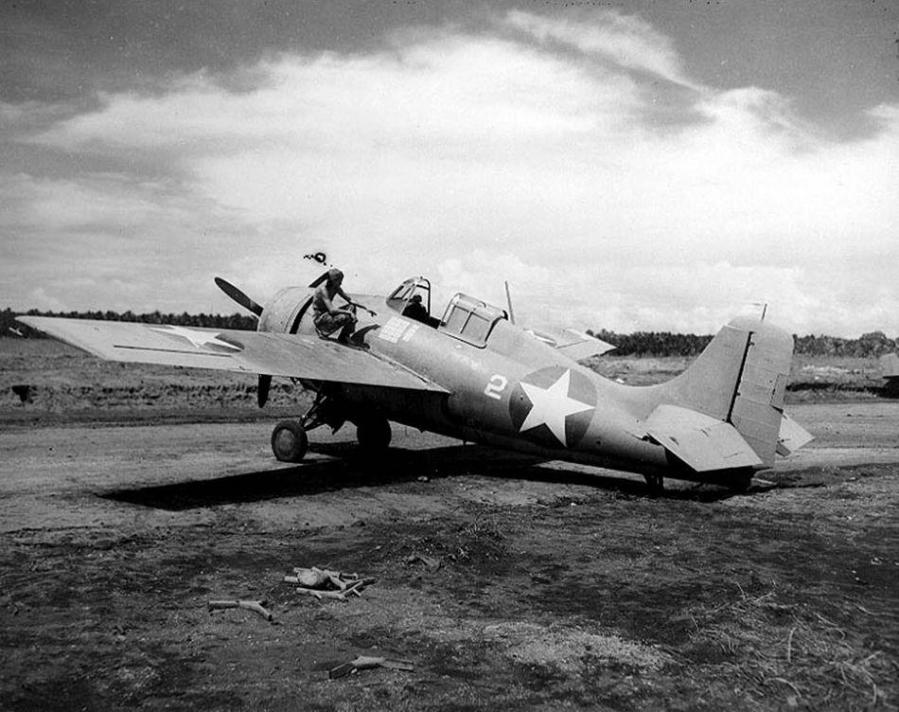
F4F - Marion Carl, VMF-223 - Henderson Field - Février/February 1943
D'autres sources indique que cet avion était celui de John Smith (?)
Other sources indicate this aircraft was that of John Smith (?)
© US Navy (domaine public - public domain)
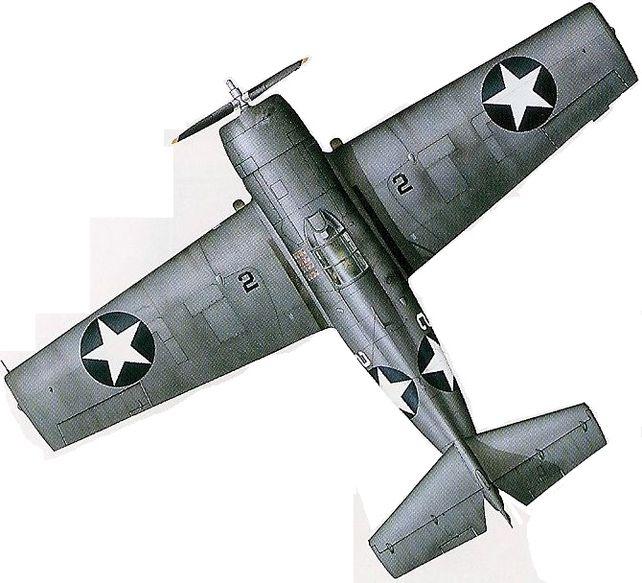

Grumman F4F-4 - source : inconnue - unknown
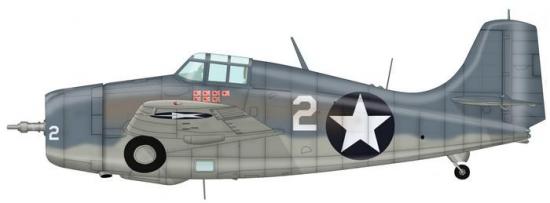
F4F-3 - Major Marion E. Carl, Guadalcanal.
Septembre 1942 (16 victoires sous la verrière). September 1942 (16 victories under the canopy).
© Gaëtan Marie - source : Gaëtan Marie's Aviation Profiles http://www.gaetanmarie.com
 Cette formation se divisa en quatre groupes : les SBD et F4F du Hornet ne trouvèrent pas les Japonais et rebroussèrent chemin. Mais les Wildcat du VF-8, à court de carburant, durent amerrir. Par contre, les SBD et TBD des Yorktown et Enterprise attaquèrent et coulèrent l'Akagi, le Kaga et le Soryu.
Cette formation se divisa en quatre groupes : les SBD et F4F du Hornet ne trouvèrent pas les Japonais et rebroussèrent chemin. Mais les Wildcat du VF-8, à court de carburant, durent amerrir. Par contre, les SBD et TBD des Yorktown et Enterprise attaquèrent et coulèrent l'Akagi, le Kaga et le Soryu.
This formation was divided into four groups: the SBD and F4F of the Hornet did not find the Japanese and turned back. But the Wildcat of the VF-8, short in petrol, had to land in the sea. On the other hand, the SBD and TBD of the Yorktown and Enterprise attacked and sunk the Akagi, Kaga and Soryu.
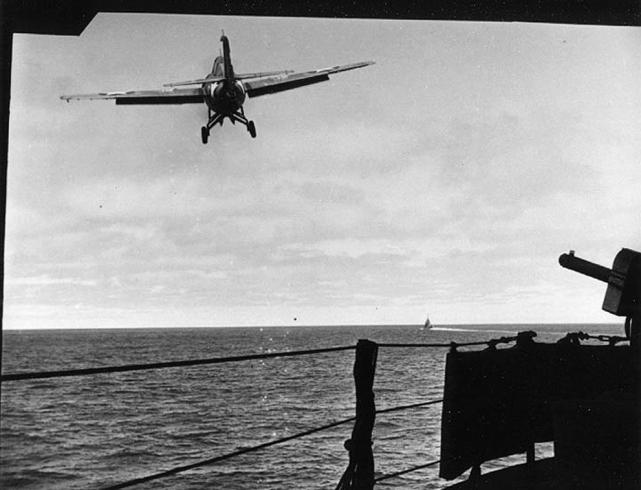
Grumman F4F-4 Wildcat - VF-3 Lieutenant William Leonard
Décollage depuis le USS Yorktown, 4 juin 1942.Taking off from USS Yorktown, June 4th, 1942.
© US Navy (domaine public - public domain)
Le Yorktown fut touché et coulé trois jours plus tard par un sous-marin. Peu de temps après, le Hiryu fut touché puis achevé par un destroyer. Midway fut donc un grand succès pour les américains dans la guerre du pacifique.
The Yorktown was touched and sunk three days later by a submarine. A bit later, the Hiryu was touched and later sunk by a destroyer. Midway was thus a great success for the Americans in the Pacific war.
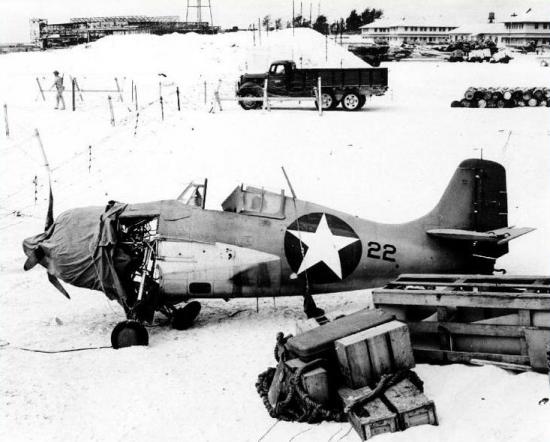
F4F-3 (BuAer 4006) - Sand Island, Midway, VMF 221 (Captain John F. Carey, USMC)
L'avion fut endommagé et Carey blessé lors de l'attaque du 4 juin 1942.
The plane was damaged and Carey wounded during the attack on the 4th June, 1942.
© Naval Historical Center - (US Navy) - www.history.navy.mil
Les avions engagés le 4 juin - Aircrafts in action on the 4th June.
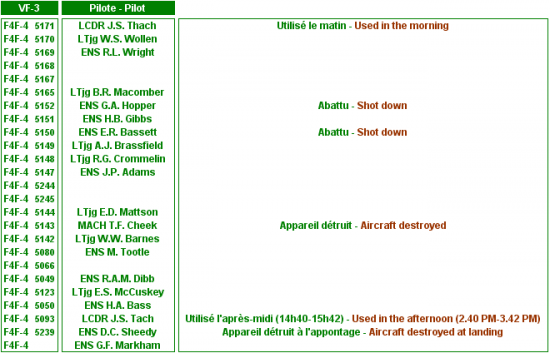
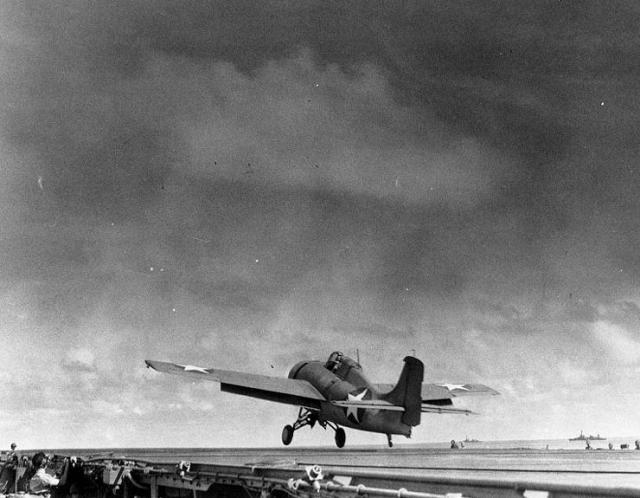
Grumman F4F-4 Wildcat (BuAer 5222) - VF-6, Machinist Julius A. Achten
Décollage depuis le USS Enterprise - 18 mai 1942.Taking off from USS Enterprise - May 18th, 1942
© US Navy (domaine public - public domain)
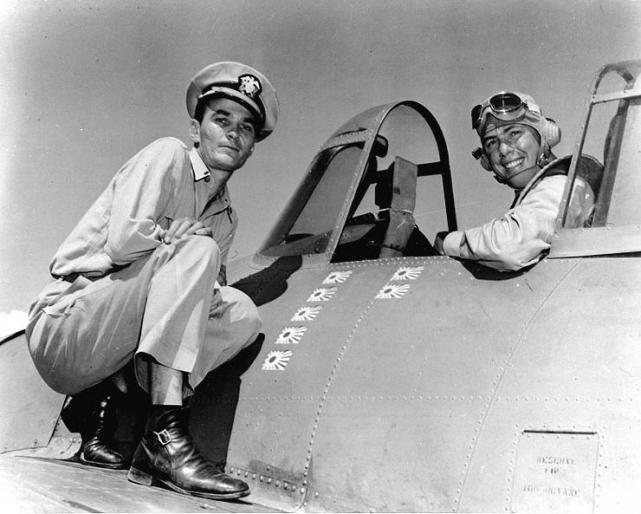
ENS George H. Gay (VT-8) sur l'aile du F4F-4 du LTjg Elbert S. McCuskey (VF-3)
ENS George H. Gay (VT-8) on the wing of JTjg Elbert S. McCUskey's F4F-3 (VF-3).
© US National Archives (website)
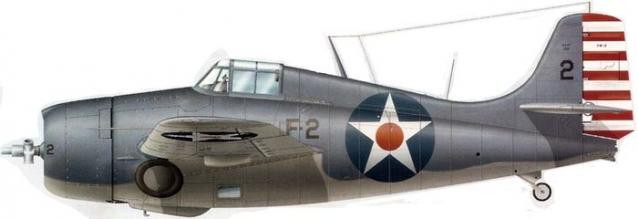
Grumman F4F-3 Wildcat (BuAer 2531) - Lt. Elbert S. McCuskey, Fighting Forty-two
USS Yorktown (CV-10) - Mer de Corail, 8 mai 1942 - Coral sea - May 8th, 1942
© Jean-Marie Guillou
Les victoires des Wildcat le 4 juin - Wildcat victories on the 4th June.

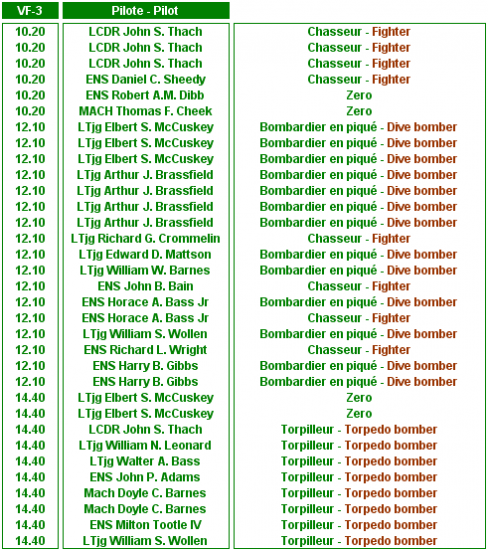
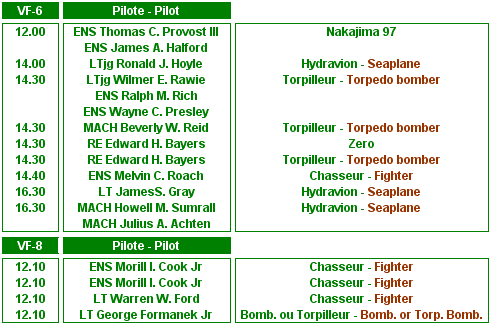

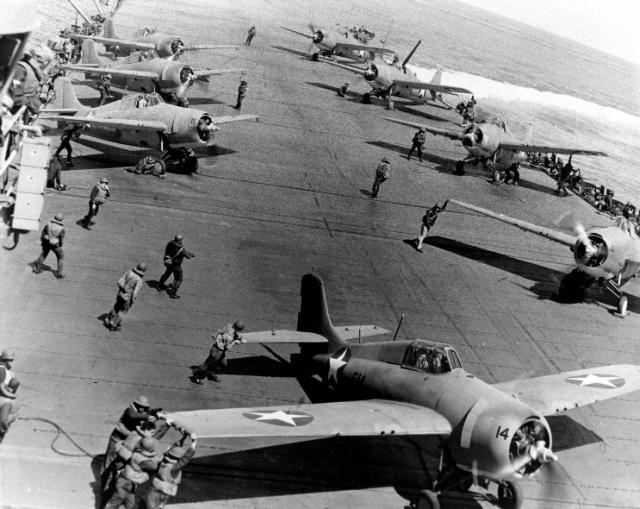
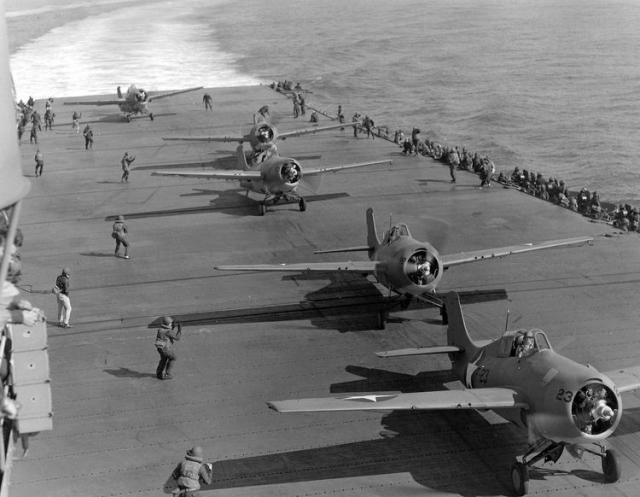
Les F4F-4 de la VF-8 (USS Hornet) s'apprêtent à décoller.
F4F-4 of VF-8 (USS Hornet) are about to take off.
© US National Archives (website)
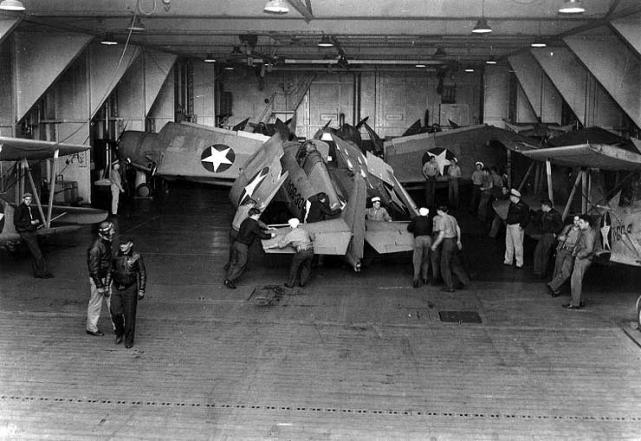
Grumman F4F-4 Wildcat - USS Long Island
17 juin 1942, le Long Island prend le chemin du retour vers la côte Ouest.
June 17th, 1942, the Long Island starts and returns on the West Coast.
© US Navy (domaine public - public domain)
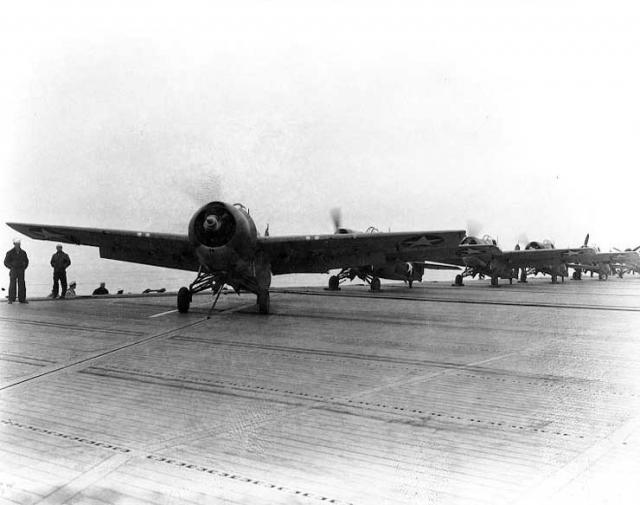
Grumman F4F-4 Wildcat - USS Long Island
17 juin 1942, prêt à être catapulté. June 17th, 1942, on the catapult.
© US Navy (domaine public - public domain)
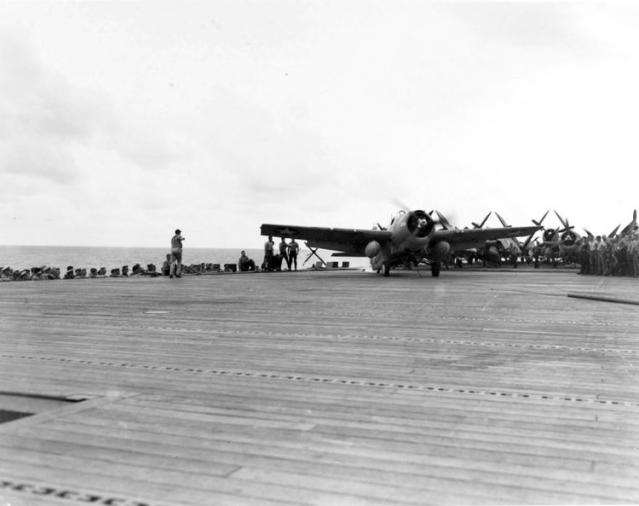
Grumman F4F-4 Wildcat - USS Long Island
6 mars1943. 6th March 1943.
© US Navy (domaine public - public domain)
Les Iles Salomon - Solomon Islands
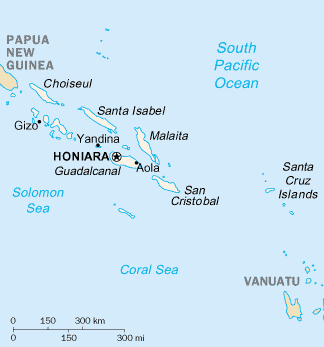
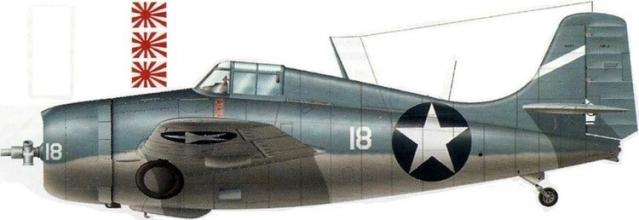
F4F-4 - VF-6 - USS Enterprise (CV-6) - Iles Salomon, août 1942. Solomon Islands, August 1942.
© Jean-Marie Guillou
En août 1942, les porte-avions Saratoga, Wasp et Enterprise affrontèrent au large des Salomon orientales (Guadalcanal) les porte-avions Shokaku et Ryujo. Le 24, le Ryujo fut coulé. Ce même jour, peu après 16 heures, l'Amiral Fletcher envoie 53 Wildcat des VF-5 et VF-6 affronter une vague d'avions japonais.
In August 1942, the aircraft carriers Saratoga, Wasp and Enterprise faced the aircraft carriers Shokaku and Ryujo in the region of Eastern Solomon Islands (Guadalcanal) . The 24, the Ryujo was sunk. The same day, shortly after 4 pm, the Admiral Fletcher sends 53 Wildcat of the VF-5 and VF-6 to fight a group of Japanese aircrafts.
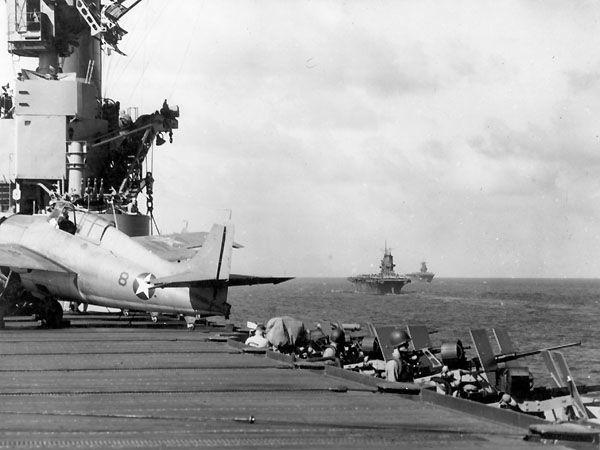
Grumman F4F Wildcat - USS Wasp (CV-7)
USS Saratoga (CV-3) et USS Enterprise (CV-6) en arrière-plan, 12 août 1942
USS Saratoga (CV-3) and USS Enterprise (CV-6) in the background, 12th August, 1942.
© US Navy (domaine public - public domain)
Ces F4F-4 abattirent de nombreux avions mais l'Enterprise fut endommagé. Les raids américains des 24 et 25 août endommagèrent le porte-avions léger Chitose et obligèrent les japonais à quitter les îles Salomon.
These F4F-4 shot down many aircrafts but the Enterprise was damaged. The American raids of August 24 and 25 damaged the light aircraft-carrier Chitose and obliged Japanese to leave the Solomon Islands.
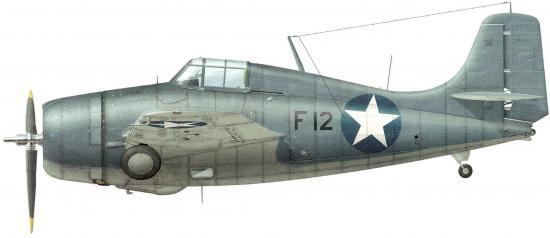
F4F-4 BuNo 5192 - VF-5 - USS Saratoga - Lt James J. 'Pug' Sutherland 2nd.
7 août 1942. 7 August 1942.
© Dekker Art Work - Thierry Dekker - http://dekker-artwork.blogspot.fr
Fin août, le Saratoga fut endommagé par un sous-marin et mi-septembre, ce fut le Wasp qui fut touché et qui sombra. En septembre 1942, seul le Hornet pouvait affronter quatre porte-avions adverses encore valides. L'Enterprise fut donc hâtivement réparé et rejoignit la flotte américaine en octobre.
At the end of August, the Saratoga was damaged by a submarine and mid-September, the Wasp was damaged and sank. In September 1942, the Hornet alone could face four aircraft-carriers still valid. The Enterprise was then quickly repaired and joined the American fleet in October.
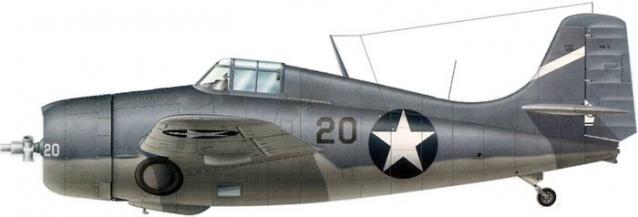
F4F-4 BuNo 5075 - VF-6 - USS Enterprise (CV-6). Machinist Donald E. Runyon
Bataille des Salomon orientales, 24 août 1942. Battle of the Eastern Solomon, 28th August, 1942.
© Jean-Marie Guillou
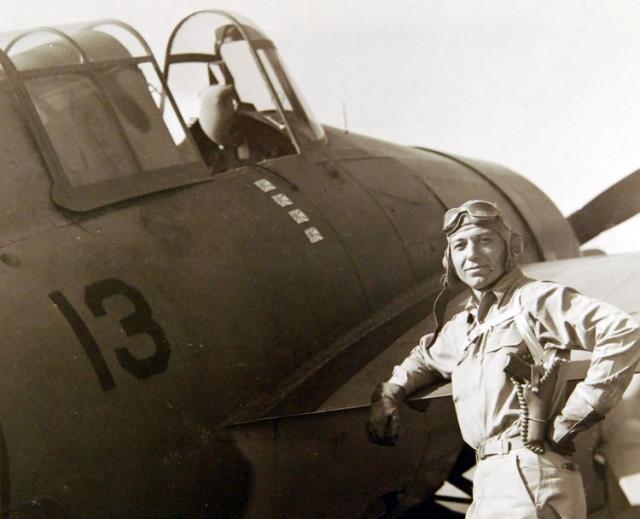
Machinist 1st Class Donald E. Runyon, VF-6, USS Enterprise
Obtient 4 victoires les 7 et 8 août 1942 et 4 autres le 27 août.
Claimed 4 airkills on 7th and 8th August, 1942 and another 4 on 27th August.
© US National Archives - Domaine public - Public domain
La bataille de Santa Cruz (archipel entre les Nouvelles-Hébrides et les Salomon) débuta le 26 octobre 1942 : le Zuiho et le Hornet furent coulés, le Shokaku sérieusement endommagé. Seuls restaient valides l'Enterprise (US) et les porte-avions Junyo et Hiyo (Japonais) à l'issue de la bataille.
The battle of Santa Cruz (archipelago between New Hebrides and Solomon Islands) began on October 26th, 1942 : the Zuiho and Hornet were sunk, the Shokaku seriously damaged. The Enterprise (US) and the aircraft carriers Junyo and Hiyo (Japanese) remained valid at the end of the battle.
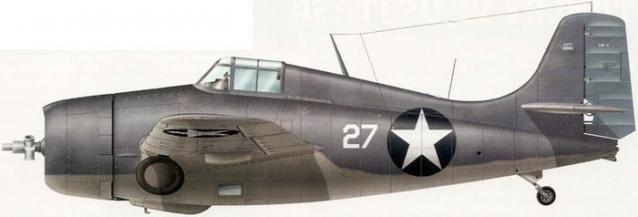
F4F-4 BuNo 02069 - VF-72 - USS Hornet (CV-8). Ensign George L. Wrenn
Bataille des îles Santa Cruz, 26 octobre 1942. Battle of Santa Cruz islands, 26th October, 1942.
© Jean-Marie Guillou
Les 34 F4F-4 du VF-10 (Enterprise) et les 36 F4F-4 du VF-72 (Hornet) avaient détruit près de 100 avions japonais contre la perte de 74 avions américains de tous types. Le lieutenant Vejtasa (VF-10) et l'enseigne Wrenn (VF-72) devinrent as en une seule journée en abattant respectivement 7 et 5 avions.
The 34 F4F-4 of the VF-10 (Enterprise) and the 36 F4F-4 of the VF-72 (Hornet) had destroyed nearly 100 Japanese aircrafts versus the loss of 74 American aircrafts of all types. the Lieutenant Vejtasa (VF-10) and Ensign Wrenn (VF-72) became aces in only one day by shooting down respectively 7 and 5 planes.
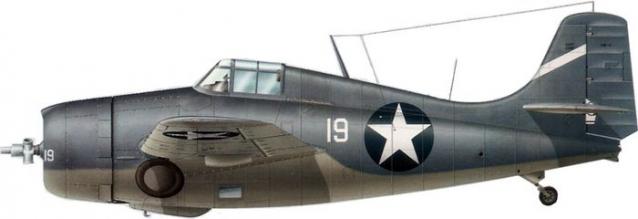
F4F-4 BuNo 03417 - VF-10 - USS Enterprise (CV-6). Lieutenant Stanley W. Vejtasa
Bataille des îles Santa Cruz, 26 octobre 1942. Battle of Santa Cruz islands, 26th October, 1942.
© Jean-Marie Guillou
Guadalcanal
(voir position sur carte ci-dessus - see position on map right above)
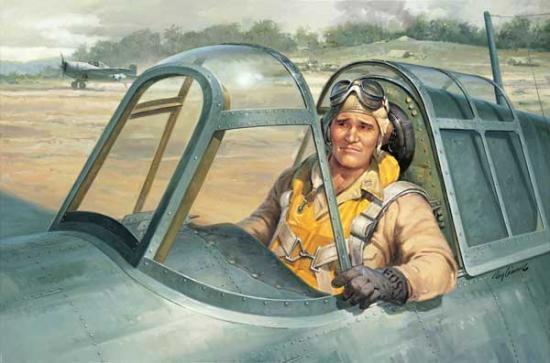
Joe Foss - VMF 121, Henderson Field, Guadalcanal.
© Roy Grinnell www.roygrinnell.com

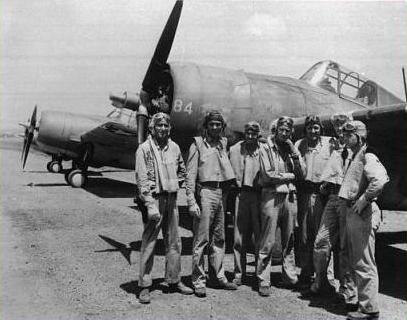
Joe Foss - VMF 121, Henderson Field, Guadalcanal.
Auteur inconnu - Author unknown
Le 7 août 1942, les américains débarquèrent à Guadalcanal et prirent l'aérodrome qu'ils baptisèrent Henderson Field. 19 F4F-4 du VMF-223 (squadron de chasse des Marines) y atterrissèrent en provenance du porte-avions d'escorte Long Island.
On August 7th, 1942, the Americans landed in Guadalcanal and took the airfield which they named Henderson Field. 19 F4F-4 of the VMF-223 (fighter squadron of the Navy) landed there, coming from the escort aircraft-carrier Long Island.
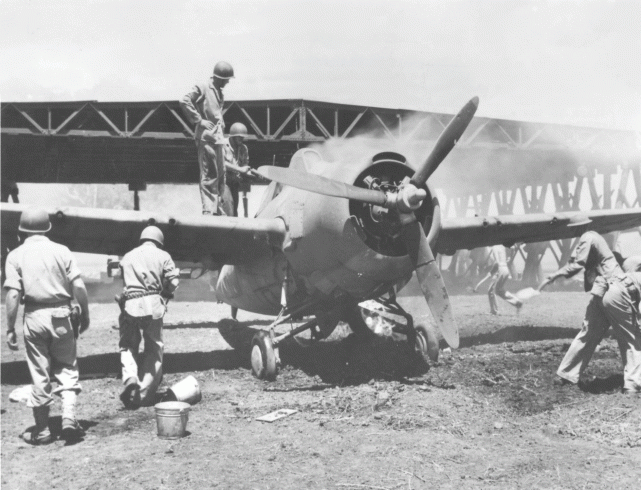
F4F-4 Marine Air Group 23 (VMF 223, VMF 224...) - Henderson Field, Guadalcanal, Solomon Islands - 1942
L'avion fut endommagé par une attaque japonaise en octobre.
The aircraft was damaged by a japanese attack in October.
© United States. Office of War Information - Domaine public - Public domain
Fin août les rejoignent le VMF-24, puis le VMF-121 en septembre, le VMF-212 (commandé par le Lieutenant Colonel "Indian" Joe Bauer) en octobre et les VMF-112 et 122 en novembre.
At the end of August the VMF-24 joined them, then the VMF-121 in September, the VMF-212 (ordered by Lieutenant Colonel "Indian" Joe Bauer) in October and the VMF-112 and 122 in November.
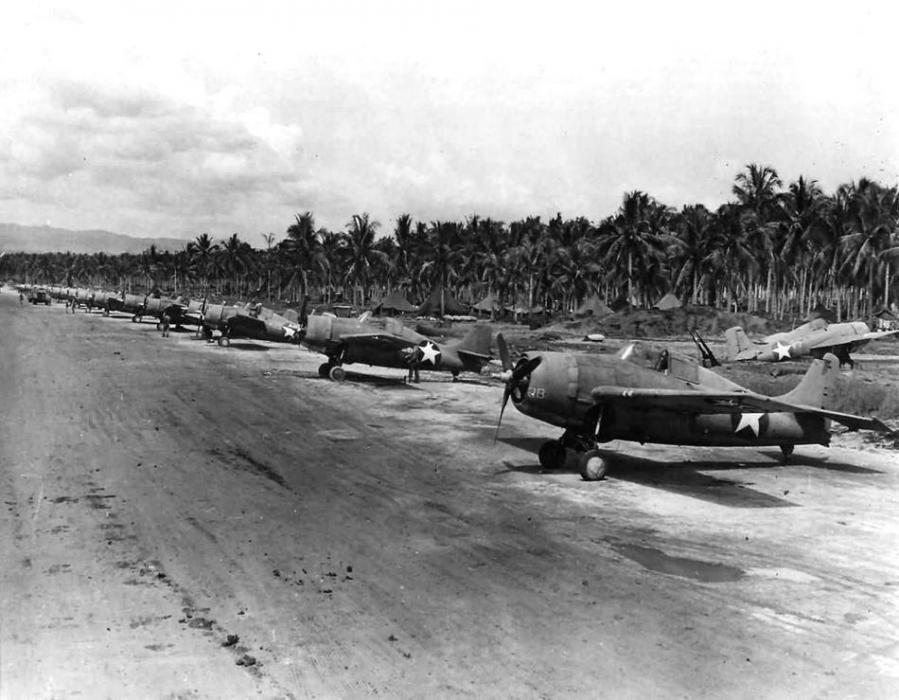
F4F-4 - Henderson Field, Guadalcanal, Solomon Islands - 1942
© US Navy - Domaine public - Public domain
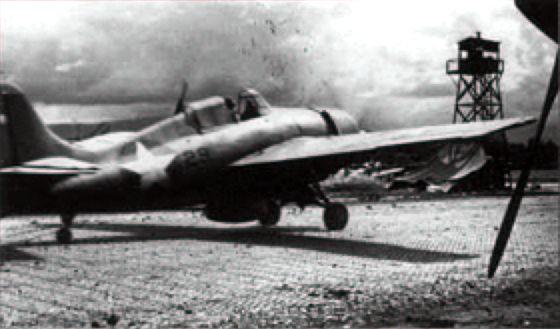
F4F-4 - VMF-121 - Guadalcanal,Novembre / November - 1942
© US Navy - Domaine public - Public domain
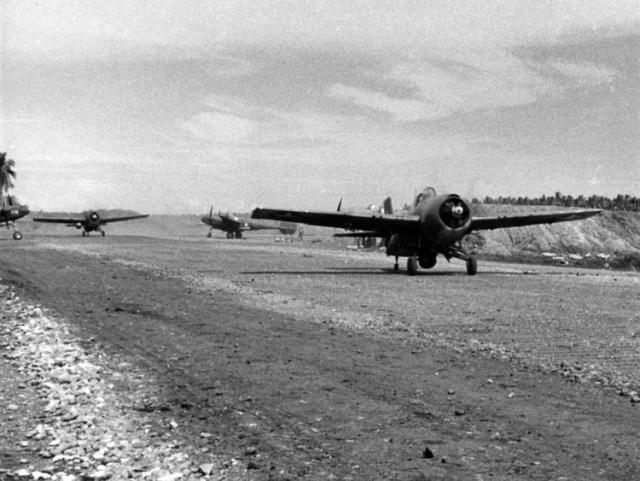
F4F-4 - VMF-121 - Henderson Field, Guadalcanal, Décembre / December - 1942
© US Navy - Domaine public - Public domain
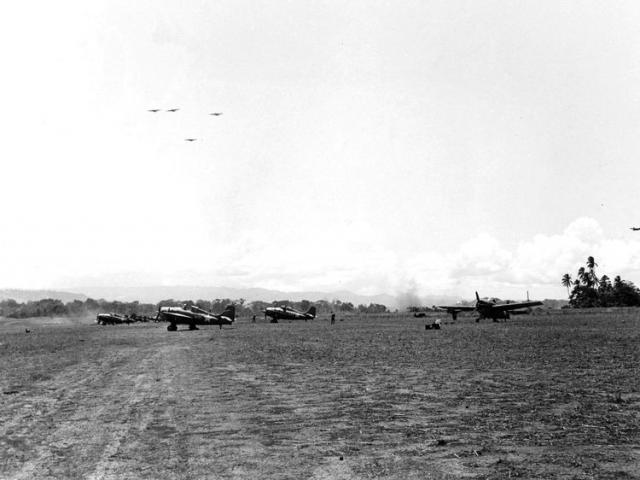
F4F-4 - Henderson Field, Guadalcanal, Novembre / November - 1942
Des B-17E survolent le terrain - B-17E fly over the airfield
© US Navy - Domaine public - Public domain
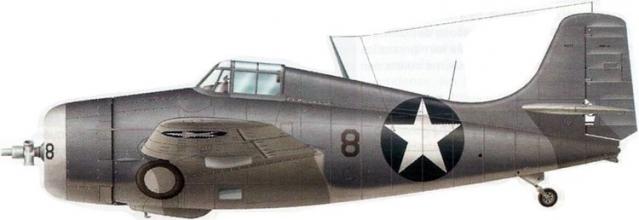
F4F-4 - VMF-212 - Guadalcanal, été /summer 1942
© Jean-Marie Guillou
Lors de l'arrivée de la VMF-212, Joe Bauer (qui se posait toujours en dernier) repéra un groupe de Val en approche, les attaqua (presque à court de carburant) et abattit 4 de ces bombardiers : il fut décoré de la médaille d'honneur de Congrès mais ne vécut pas assez longtemps pour la recevoir (abattu le 14 novembre).
At the arrival of the VMF-212, Joe Bauer (who was always used to land the last) saw a group of Val approaching and attacked them (despite he was short in petrol) and shot down 4 of these bombers : he was decorated with the medal of honor of the Congress but did not live long enough to receive it (shot down on November 14th).
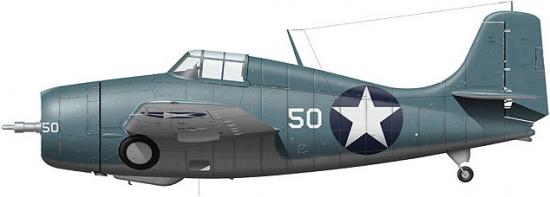
F4F-4 - Capt. Joe Foss, VMF 121
source : TULLIS AVIATION ART LTD - © Thomas A. Tullis - http://www.tullisart.com/main.htm
 Le capitaine Joe Foss (VMF-121), surnommé "Swivel Neck Joe" ("Joe au cou pivotant" car il scrutait toujours l'horizon à la recherche des Zeros), remporta 26 victoires, toutes sur Wildcat. Le 23 octobre, il abattit 4 Zero sur les 25 qui attaquaient son escadrille. Le 25 octobre, il en abattit 5. Joe Foss reçut la DFC le 9 novembre : son escadrille (surnommée "Joe's Flying Circus") étaient alors créditée de 72 victoires. Joe Foss fut évacué du front en 1943 atteint de la malaria.The captain Joe Foss (VMF-121), nicknamed "Swivel Neck Joe" (because he used to always look around for the Zeros), obtained 26 victories, all with a Wildcat. On October 23rd, he shot down 4 Zeros out of the 25 which attacked his squadron. On October 25th, he shot down 5 of them. Joe Foss received the DFC on November 9th: his squadron (called "Joe's Flying Circus") was then credited with 72 victories. Joe Foss was evacuated in 1943 because of the malaria.
Le capitaine Joe Foss (VMF-121), surnommé "Swivel Neck Joe" ("Joe au cou pivotant" car il scrutait toujours l'horizon à la recherche des Zeros), remporta 26 victoires, toutes sur Wildcat. Le 23 octobre, il abattit 4 Zero sur les 25 qui attaquaient son escadrille. Le 25 octobre, il en abattit 5. Joe Foss reçut la DFC le 9 novembre : son escadrille (surnommée "Joe's Flying Circus") étaient alors créditée de 72 victoires. Joe Foss fut évacué du front en 1943 atteint de la malaria.The captain Joe Foss (VMF-121), nicknamed "Swivel Neck Joe" (because he used to always look around for the Zeros), obtained 26 victories, all with a Wildcat. On October 23rd, he shot down 4 Zeros out of the 25 which attacked his squadron. On October 25th, he shot down 5 of them. Joe Foss received the DFC on November 9th: his squadron (called "Joe's Flying Circus") was then credited with 72 victories. Joe Foss was evacuated in 1943 because of the malaria.
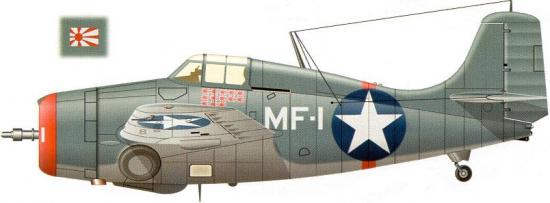
F4F-3 - VMF-224- CO Maj.Robert E.Galer - USMC - Guadalcanal.
Septembre-octobre 1942 - September-October, 1942.
© Mikhail Bykov
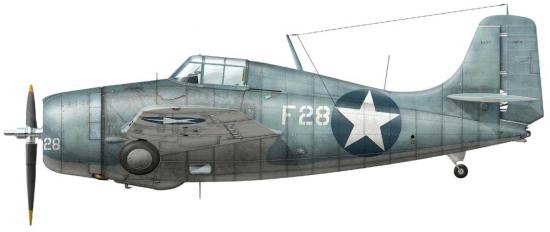
F4F-4 - VF-11 Sundowners - Henderson Field. Mai 1943 - May 1943.
© Dekker Art Work - Thierry Dekker - http://dekker-artwork.blogspot.fr
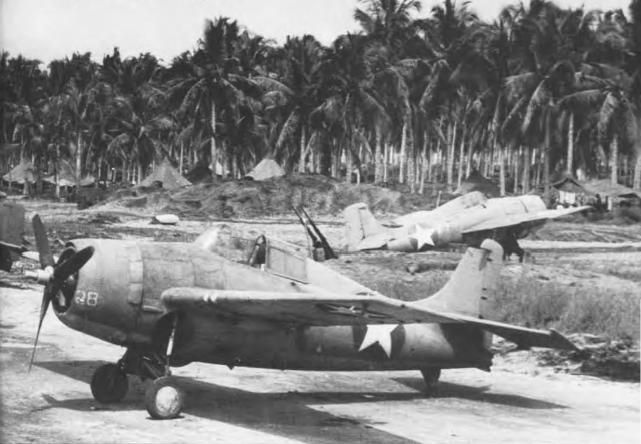
F4F-4 - Henderson Field, Guadalcanal, Solomon Islands - 1942
© US Navy - Domaine public - Public domain
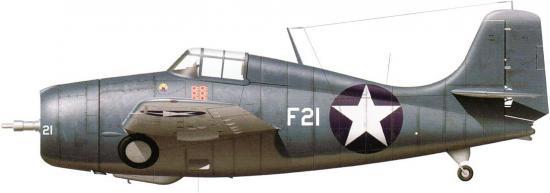
F4F-4 - VF-11 Sundowners - (Bu No 11958) Lt.W.N.Leonard.
Guadalcanal, été 1943 - Guadalcanal, Summer 1943.
© Thomas A. Tullis - http://www.tullisart.com
Les Wildcat de la Navy se distinguaient de ceux des Marines par une lettre "F" peinte sur le fuselage devant le numéro individuel.
Wildcats of the Navy were distinguished from those of the Marines by a letter "F" displayed on the fuselage in front of the individual number.
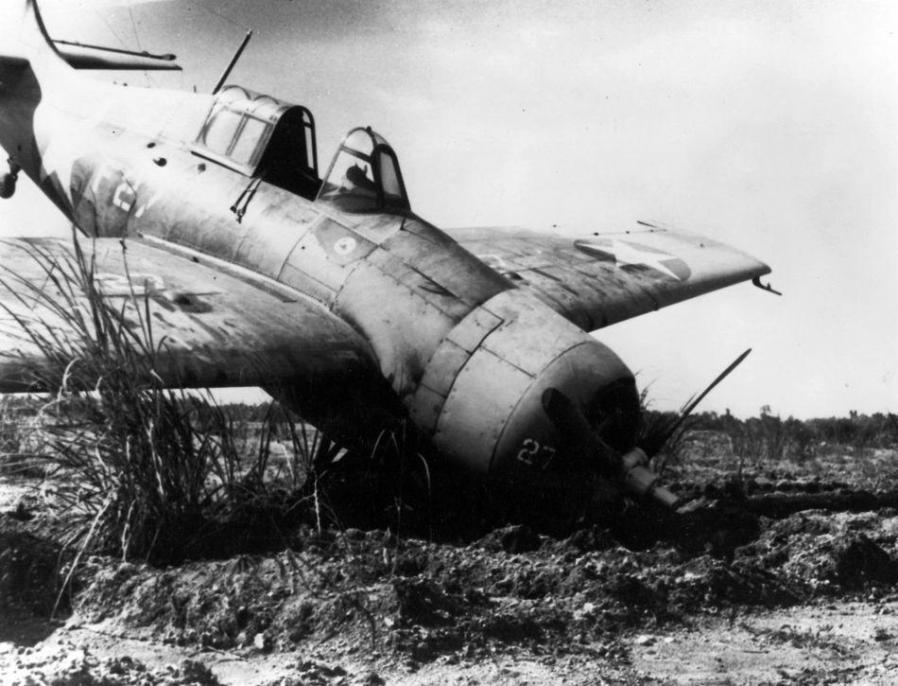
F4F-4 'F27' - VF-11 Sundowners - Juillet 1943 - July 1943.
© US Navy - Domaine public - Public domain

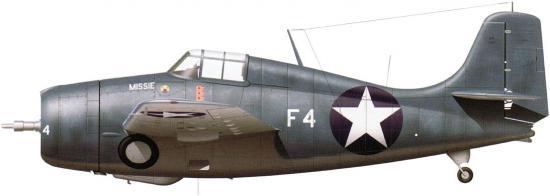
F4F-4 - VF-11 "Sundowners" - (Bu No 12153) Lt.C.R. Stimpson.
Guadalcanal, été 1943 - Guadalcanal, Summer 1943.
© Thomas A. Tullis - http://www.tullisart.com
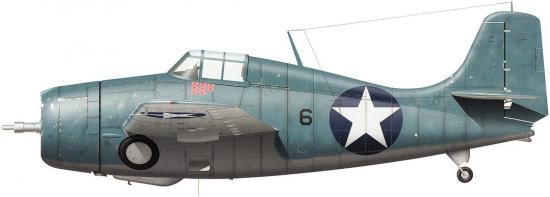
F4F-4 - VMF-121 USMC - 2nd Lt. Thomas H. Mann. Guadalcanal.
© Thomas A. Tullis - http://www.tullisart.com
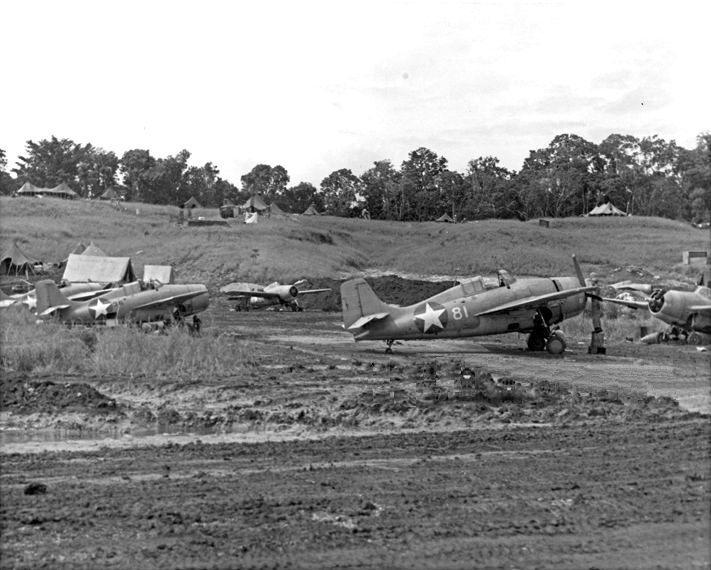
Grumman F4F-4 #81, VGF-27- Henderson Field, Guadalcanal - 1943
© US Navy - Domaine public - Public domain
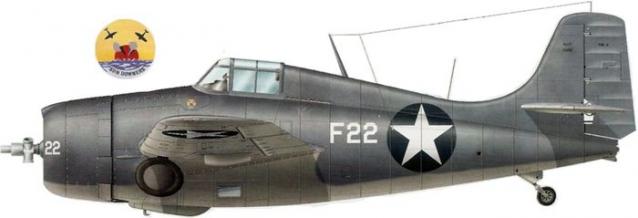
F4F-4 BuNo 03430 (?) - VF-11 "Sundowners" - Lieutenant Vernon E. Graham. Guadalcanal.
Juin 1943. June, 1943
© Jean-Marie Guillou
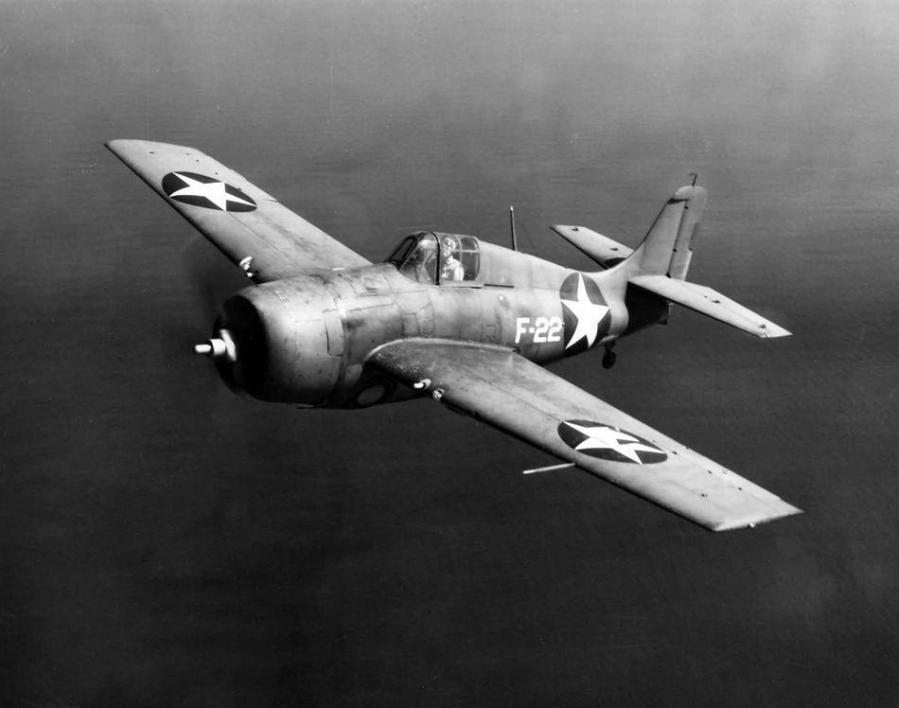
Grumman F4F-3 F22'
© US Navy - Domaine public - Public domain
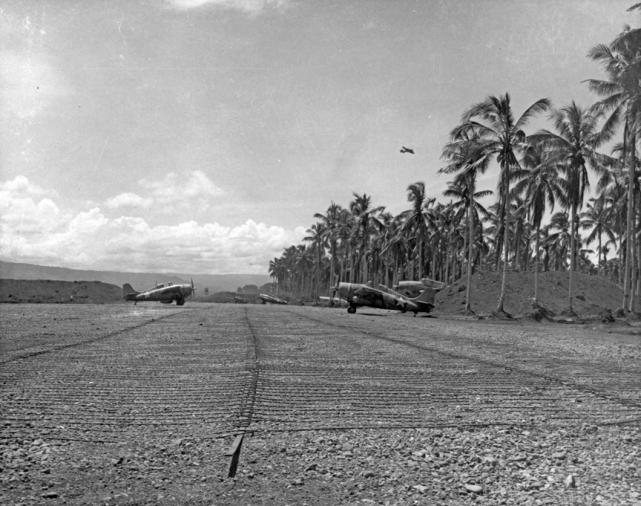
F4F - Henderson Field, Guadalcanal - 1942
© US Navy - Domaine public - Public domain
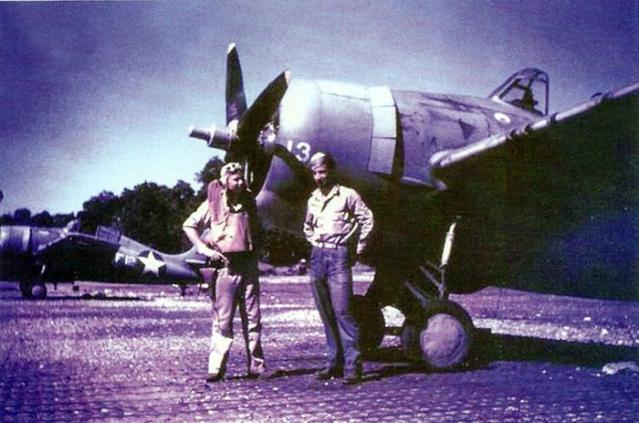
Lieutenant Charles V. Wesley (à gauche - left)
Devant le F4F-4 "F-13" du Lt Kenneth T. Viall - In font of Lt Kenneth T. Viall's F4F-4
© US Navy - Domaine public - Public domain

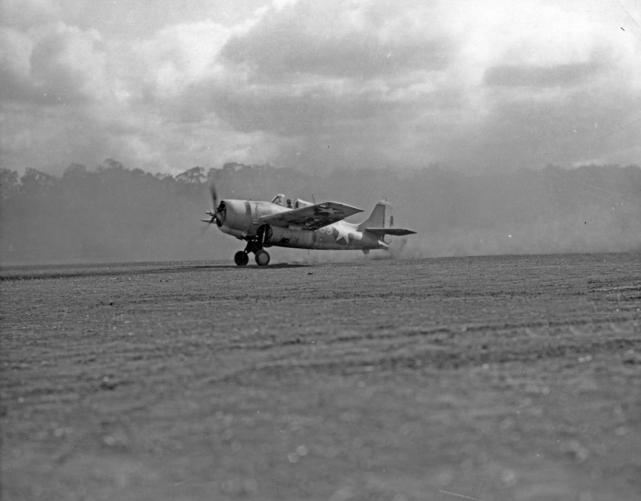
F4F- Henderson Field, Guadalcanal - 1942
© US Navy - Domaine public - Public domain
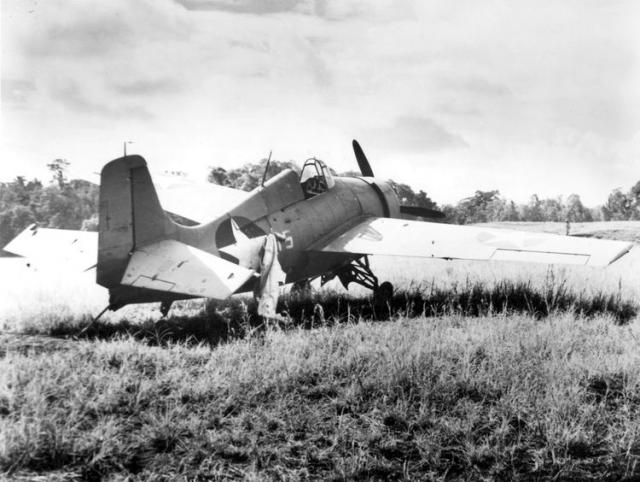
F4F-4 - Guadalcanal - 1942
F4F-4 endommagé - Damaged F4F-4
© US Navy - Domaine public - Public domain
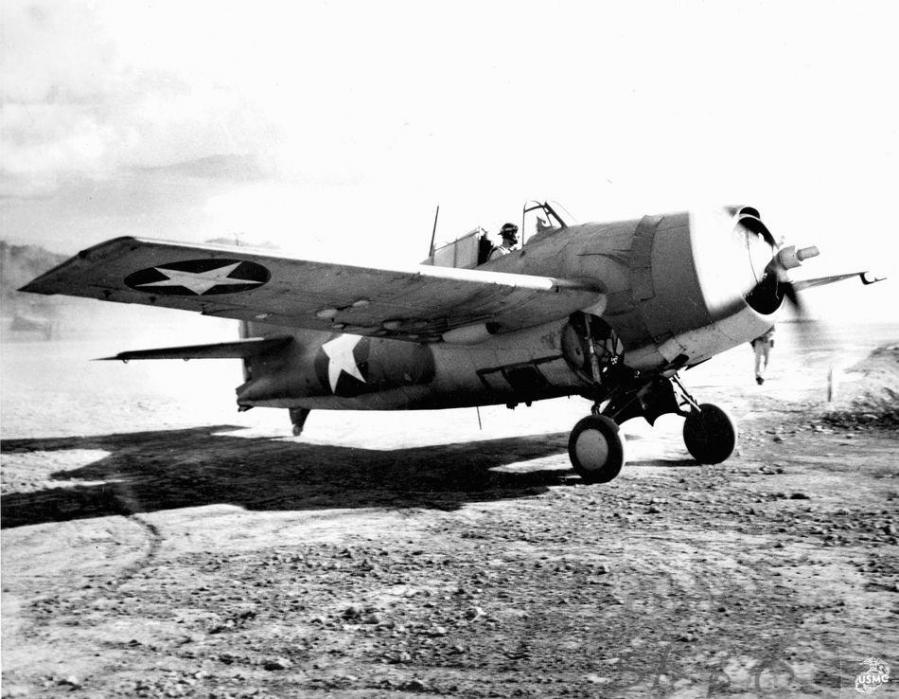
F4F-4 de retour de patrouille, Guadalcanal, décembre 1942 - returning from a combat patrol, Guadalcanal, December 1942
© U.S. Navy - National Archives (domaine public - public domain)
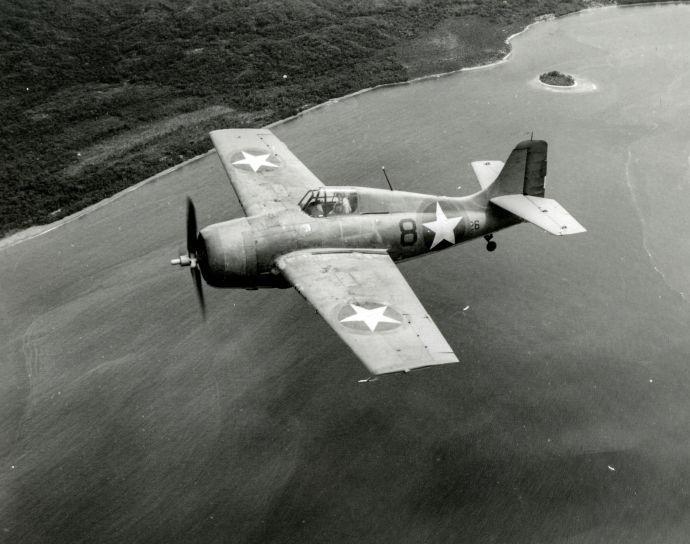
F4F-4 en patrouille sur Guadalcanal, avril 1943 - on patrol off Guadalcanal, April 1943
© U.S. Navy - National Archives (domaine public - public domain)
La bataille du Golfe de Leyte
The battle of Leyte Gulf
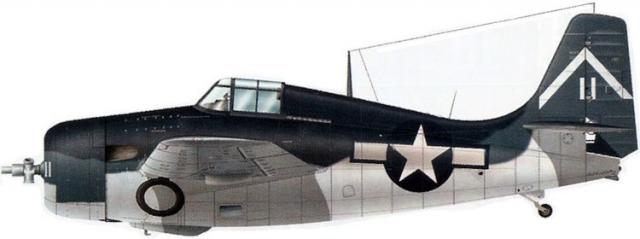
General Motors FM2 Wildcat, VC-80, USS Manila Bay (CVE-61)
Bataille de Leyte, octobre 1944 - Battle of Leyte, October, 1944
© Jean-Marie Guillou
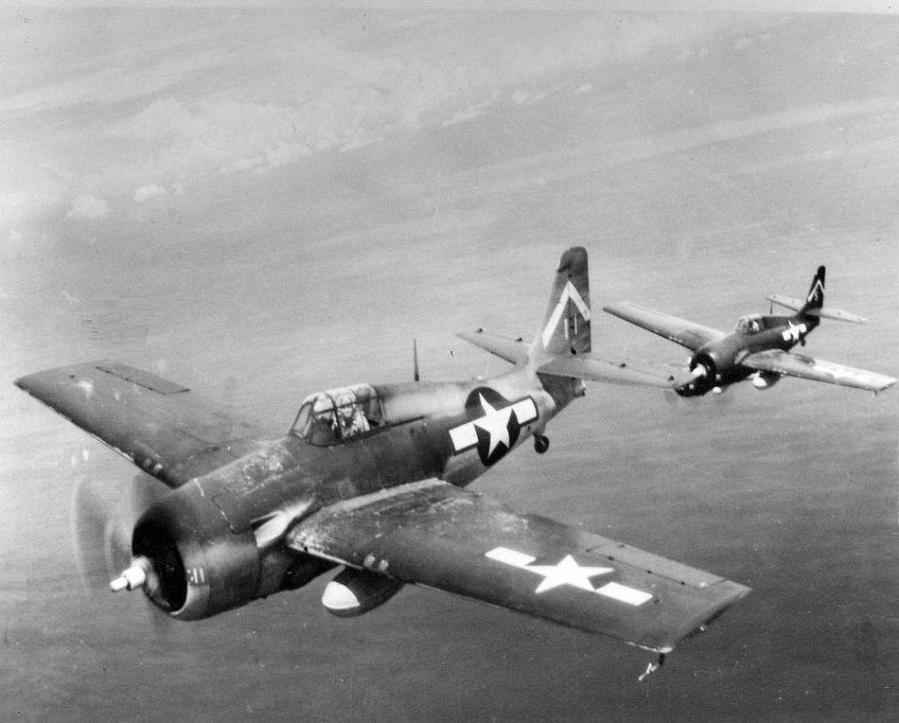
General Motors FM2 Wildcat, VC-80, USS Manila Bay (CVE-61), 1944
© US Navy - Domaine public - Public domain
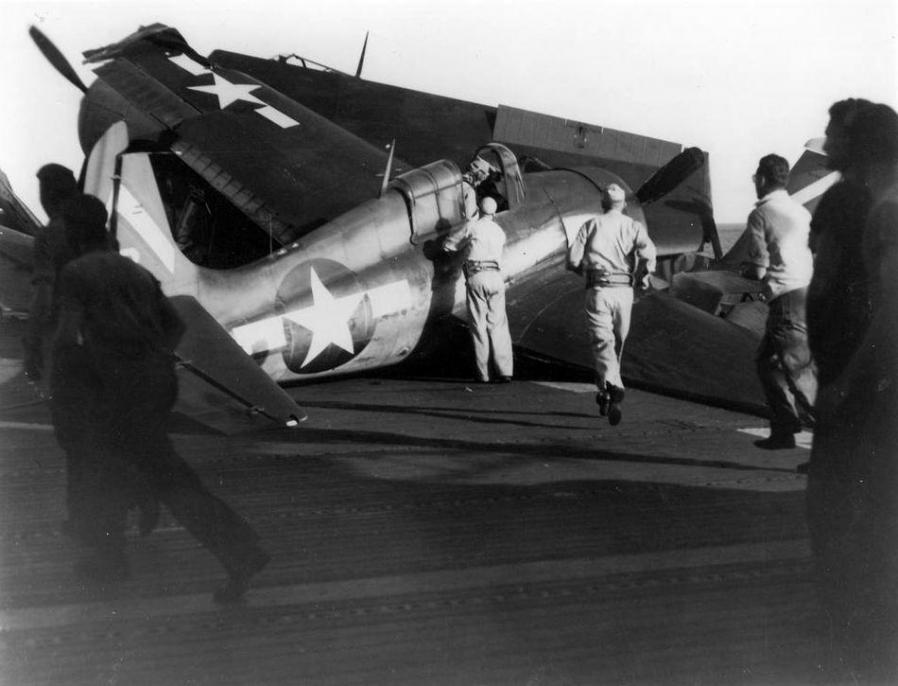
General Motors FM2 Wildcat, VC-80, USS Manila Bay (CVE-61)
Collision avec un TBM-1C Avenger - Collision with a TBM-1C Avenger
© US Navy - Domaine public - Public domain
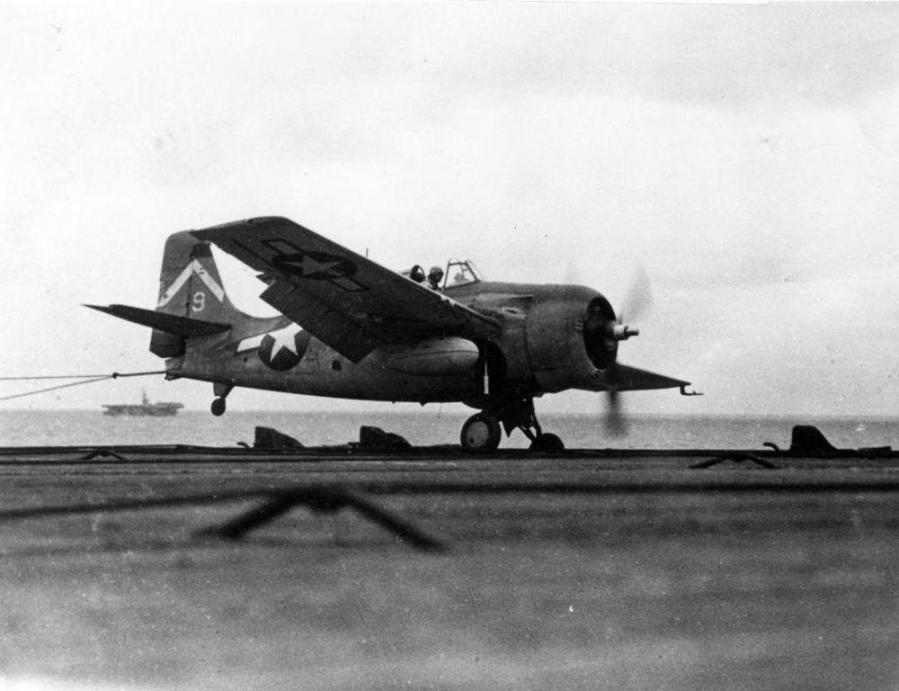
General Motors FM2 Wildcat, VC-80, USS Manila Bay (CVE-61)
Atterrissage difficile ! - Hard landing !
© US Navy - Domaine public - Public domain
Elle fut du 23 au 27 octobre 1944 l'une des plus grandes batailles du Pacifique pour la libération des Philippines. Elle opposa une immense armada américano-australienne (dont 34 porte-avions incluant 18 d'escorte soit en tout 1620 avions) à la flotte japonaise (comprenant entre autre 4 porte-avions avec 1500 avions). La flotte alliée, commandée par l'amiral Nimitz, était composée de la 3ème flotte de l'amiral Halsey (TF 38, TF-34) et de la 7ème flotte du vice-amiral Kinkaid (TG 77.2/3/4 et TG 71.1).
It was from October 23rd to 27th 1944 one of the greatest battles of the Pacific for the liberation of Philippines. It opposed an important US-Australian armada (with 34 aircraft-carriers including 18 escort aircraft-carriers i.e. 1620 aircrafts) to the Japanese fleet (4 aircraft -carriers with 1500 aircrafts).
The allied fleet, commanded by the admiral Nimitz, was composed of the 3rd fleet of the admiral Halsey (TF 38, TF-34) and of the 7th fleet of the vice-admiral Kinkaid (TG 77.2/3/4 and TG 71.1).
Des Wildcats étaient à bord de certains de ces porte-avions et participèrent à la bataille. Parmi ceux-ci, nous trouvons entre autre :
Some Wildcats were on board of some of these aircraft-carriers and took part in the battle. Among those, we find for example :
• TG-77.4.1 "Taffy One" :
- USS Santee (CVE-29) : Wildcat FM-2 - Air Group 26 (Lt. Commander H.N. Funk)
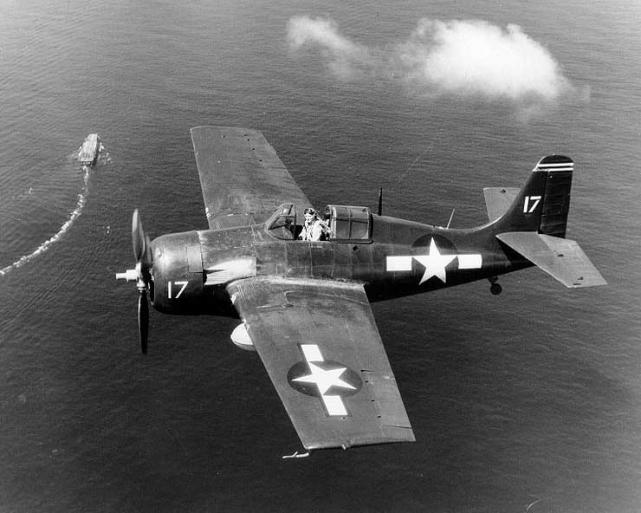
FM2 Wildcat, USS Santee
Bataille de Leyte, 20 octobre 1944 - Battle of Leyte, 20th October, 1944
© U.S. Navy (National Archives photo # 80-G-287594) (Domaine public - Public domain)
- USS Suwannee (CVE-27) : Wildcat FM-2 - Air Group 60 (Lt. Commander H.O. Feilbach)
J'ai eu le grand honneur de contacter en juillet 2009 le Commander John Smith qui fût un des pilotes embarqués sur le Suwannee pendant la Bataille du Golfe de Leyte. Il me confirma que l'Air Group 60 était bien équipé de Wildcats : après avoir été à Casablanca (Maroc) puis à Panama, le groupe rejoignit les îles Mariannes et participa à la bataille de Leyte. Le Commander John Smith a écrit un livre sur cette période de la guerre.
I had the great honor to contact in July 2009 Commander John Smith who was an embarked pilot on the Suwannee during the Battle of the Leyte Gulf. he confirmed me that the Air Group 60 was equipped with Wildcats : after Casablanca (Morrocco) and Panama, the group joined the Mariana Islands and participated to the Battle of Leyte Gulf. Commander John Smith wrote a book on the WWII period.
- USS Saginaw Bay (CVE-82) : VC-78 (Lt. Commander J.L. Hyde)
Je suis entré en contat avec Gail Dennison, la fille d'un combattant ayant servi à bord de l'USS Saginaw Bay. Je remercie Madame Dennison de m'avoir confirmé la présence de Wildcats (et d'Avenger) à bord du CVE-82.
I contacted Gail Dennison, the daughter of a man who serviced aboard the USS Saginaw Bay. I thank Mrs Dennison who confirmed me that the CVE-82 had Wildcats (and Avengers) on board.
- USS Petrof Bay (CVE-80) : Wildcat FM-2 - VC-76 (Commander J.W. Mc Cauley)
• TG-77.4.2 "Taffy Two" :
- USS Natoma Bay (CVE-62) : 16 FM-2 - Composite Squadron 81 (Lt. Commander R.C. Barnes)
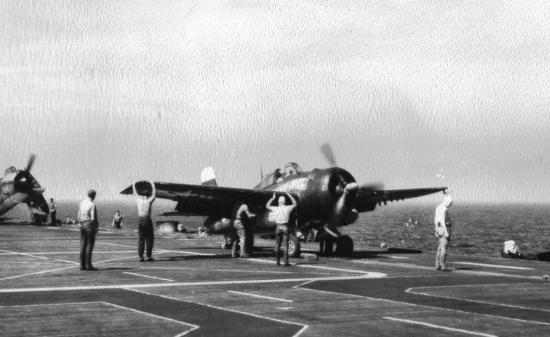
FM-2 Wildcat - VC-81, USS Natoma Bay
© Bruce Leininger - source : NavSource Naval History - www.navsource.org
- USS Kadashan Bay (CVE-76) : 16 FM-2 - Composite Squadron 20 (Lt. Commander J.N. Dales)

